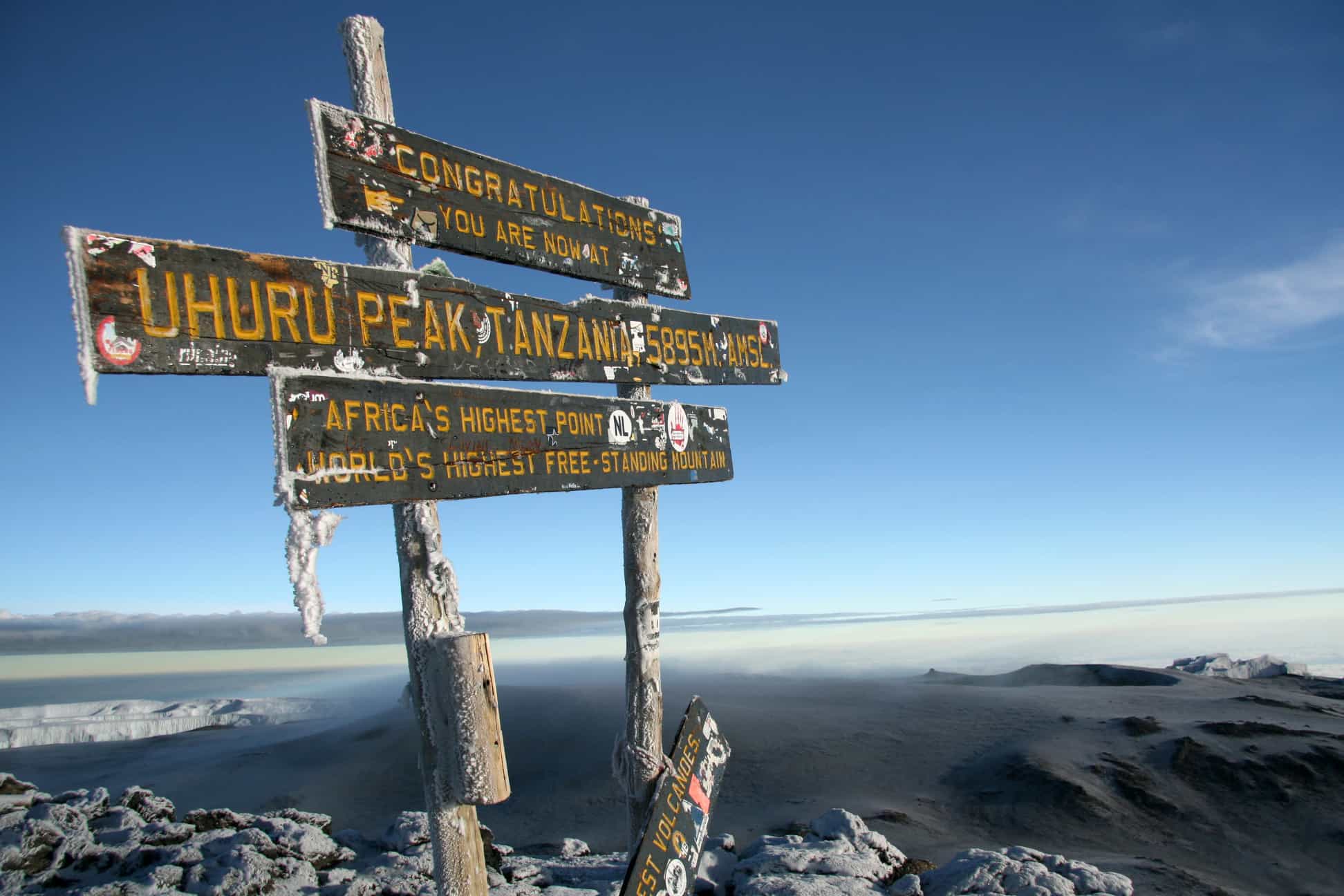
Climb Mount Kilimanjaro (5895m) via The Machame Route
Hike the most scenic route to the ‘Roof of Africa’ – the continent’s highest peak
What's Included?
Activities & Certified Guides
All itinerary activities with local, certified guide and support teamHotel & Camping
6 nights camping and 2 nights in a hotelMeals
All meals while on the trek, plus breakfast on departure day.Transfers & Porterage
To and from the airport and everything in betweenPermits
All permits, taxes and licensesSmall Like-minded Groups
Solo-friendly by design, join our small n’ sociable groups of up to 12 like-minded, active and outdoorsy people…
What's it like?
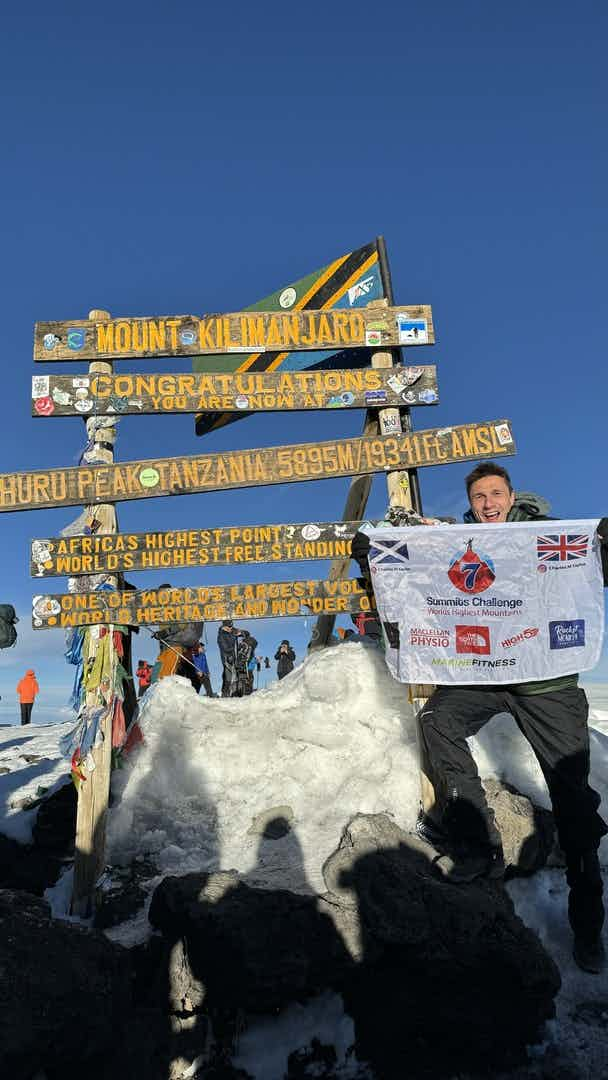
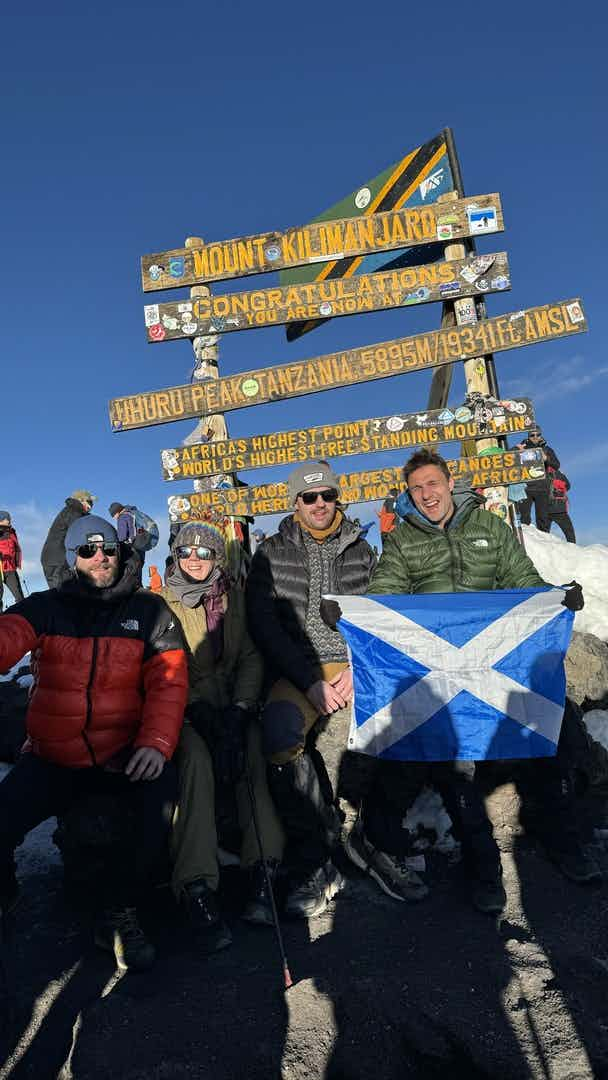
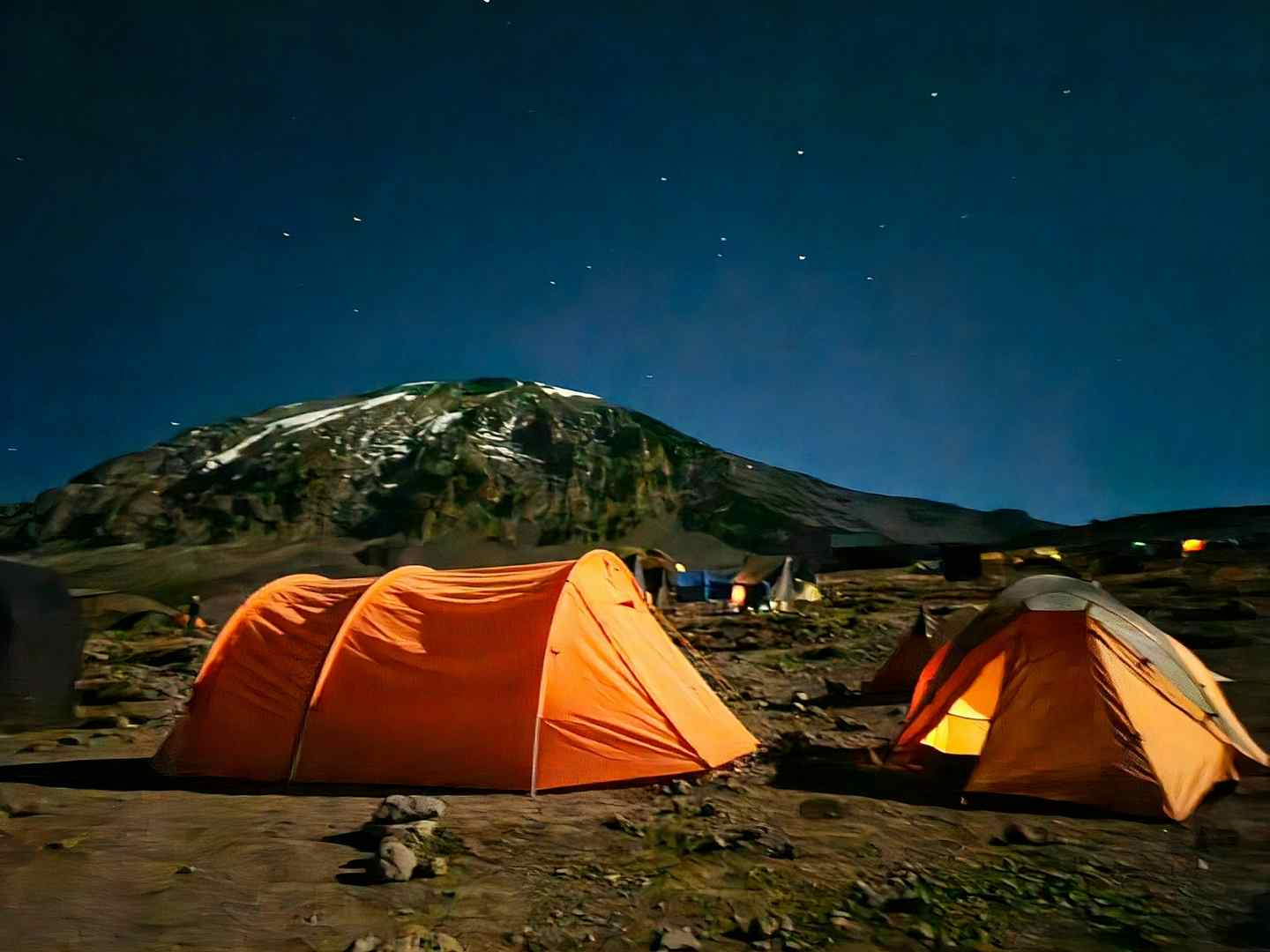
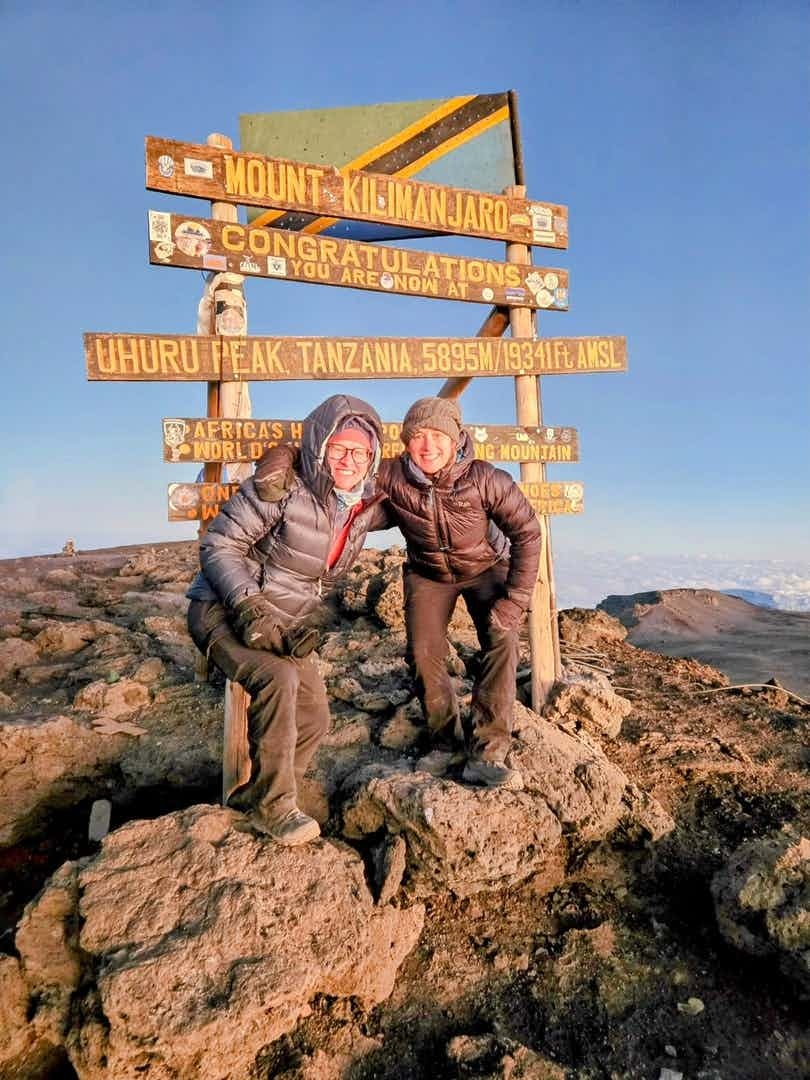
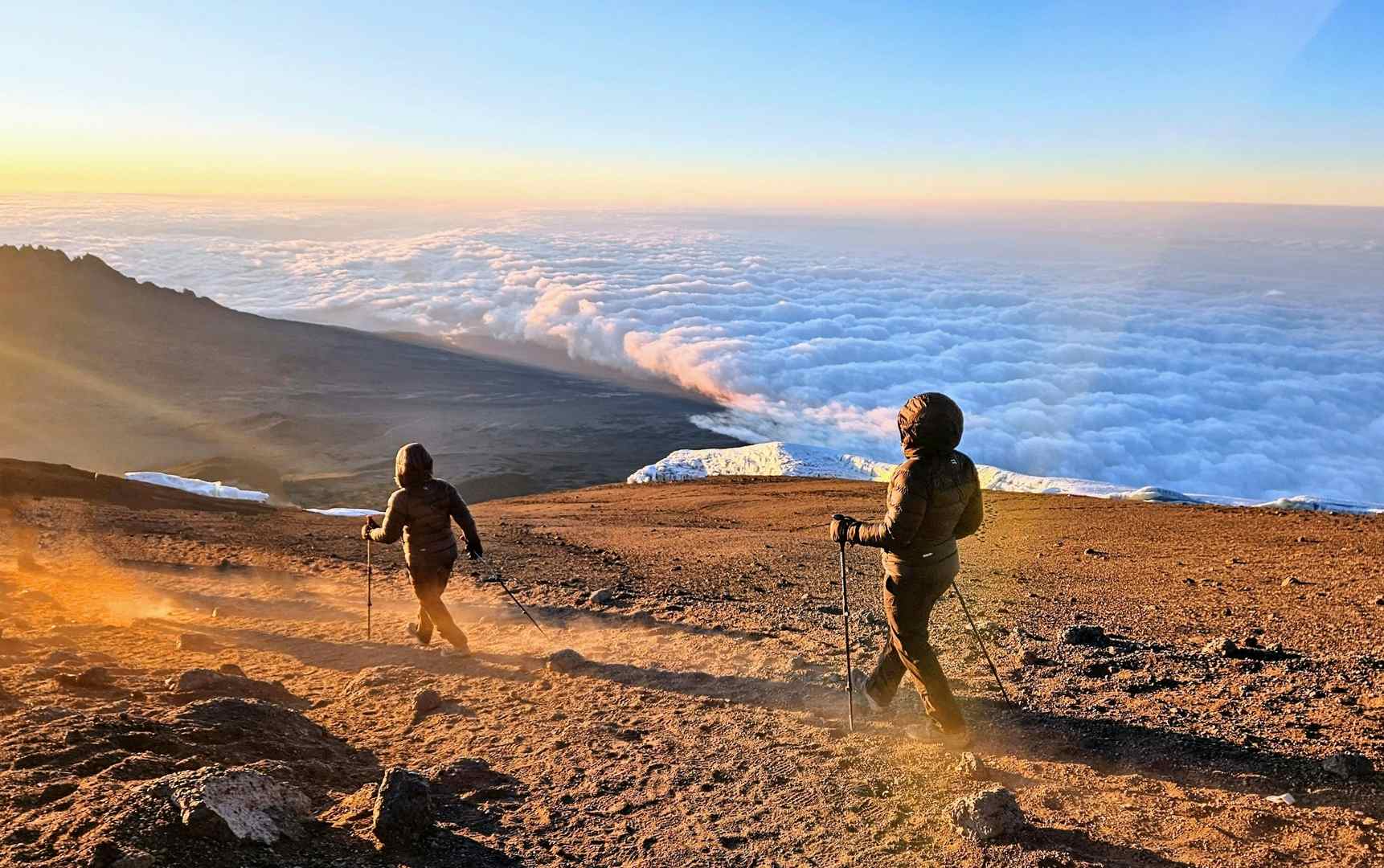
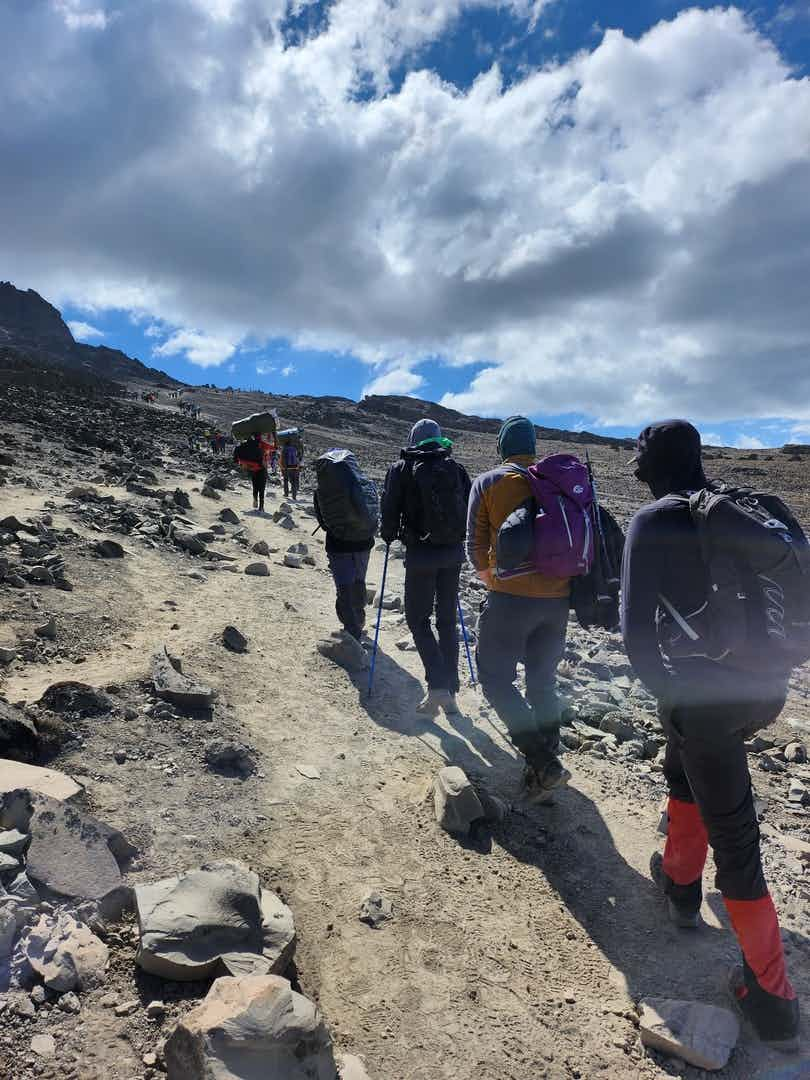
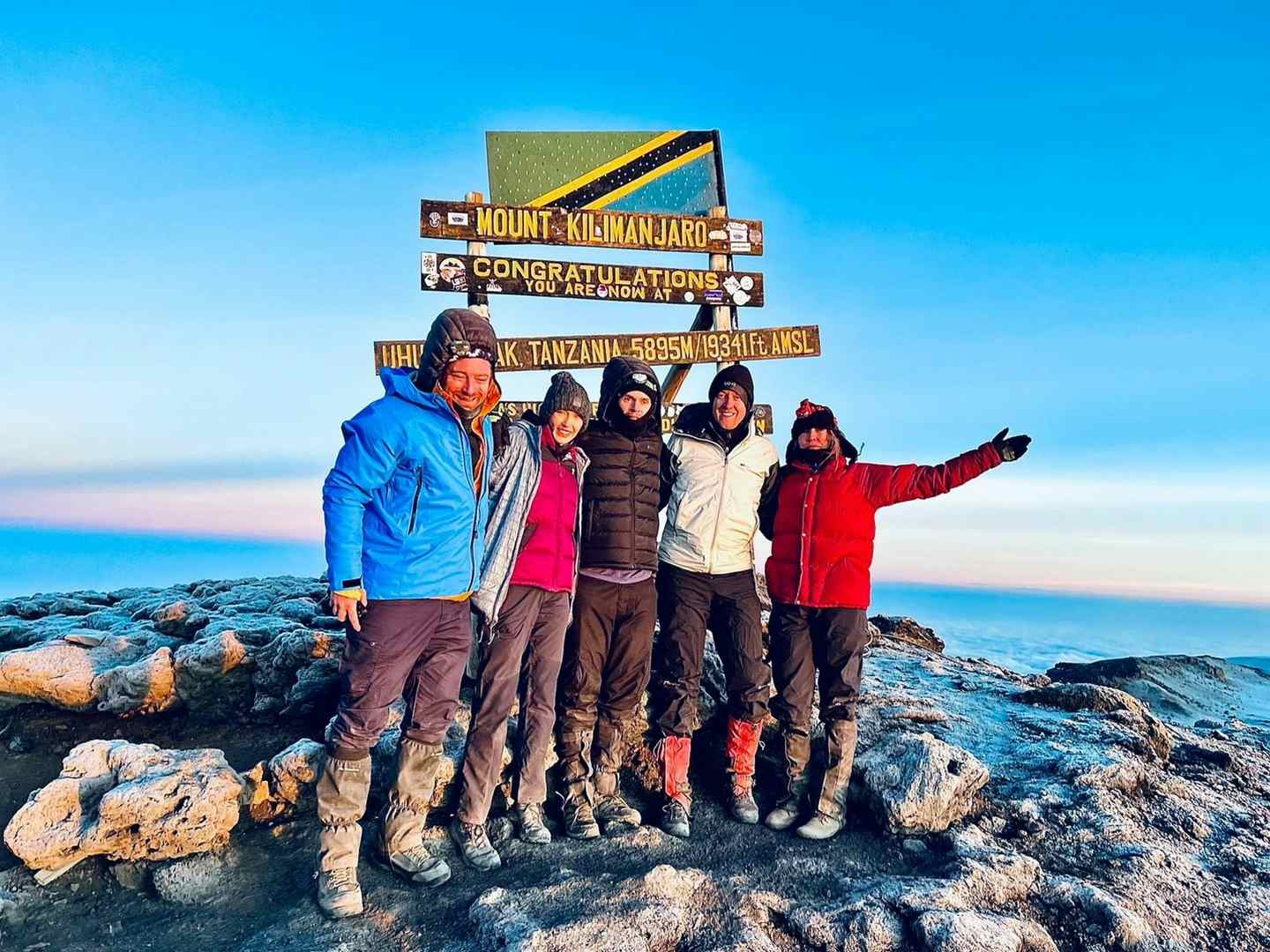
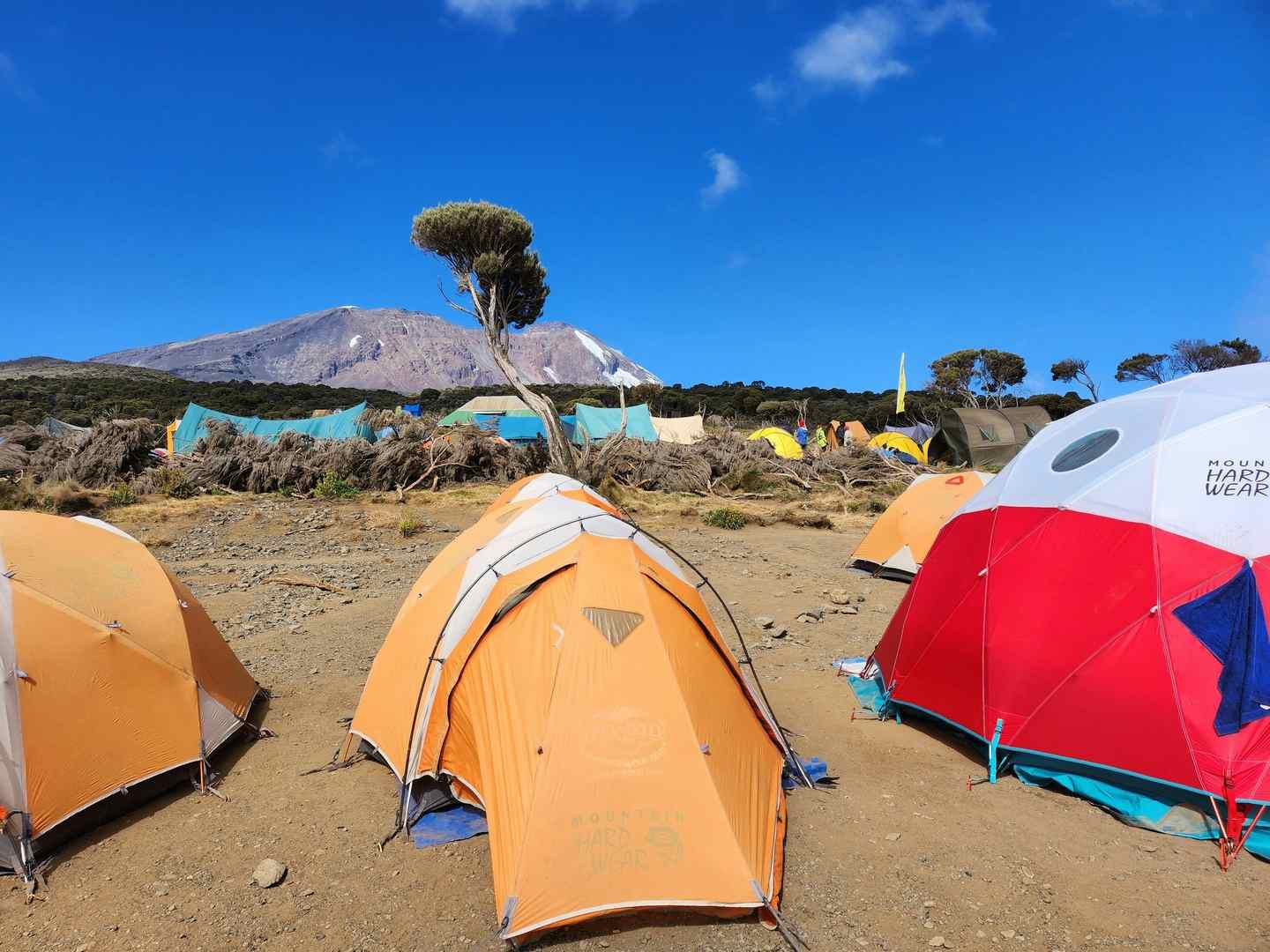
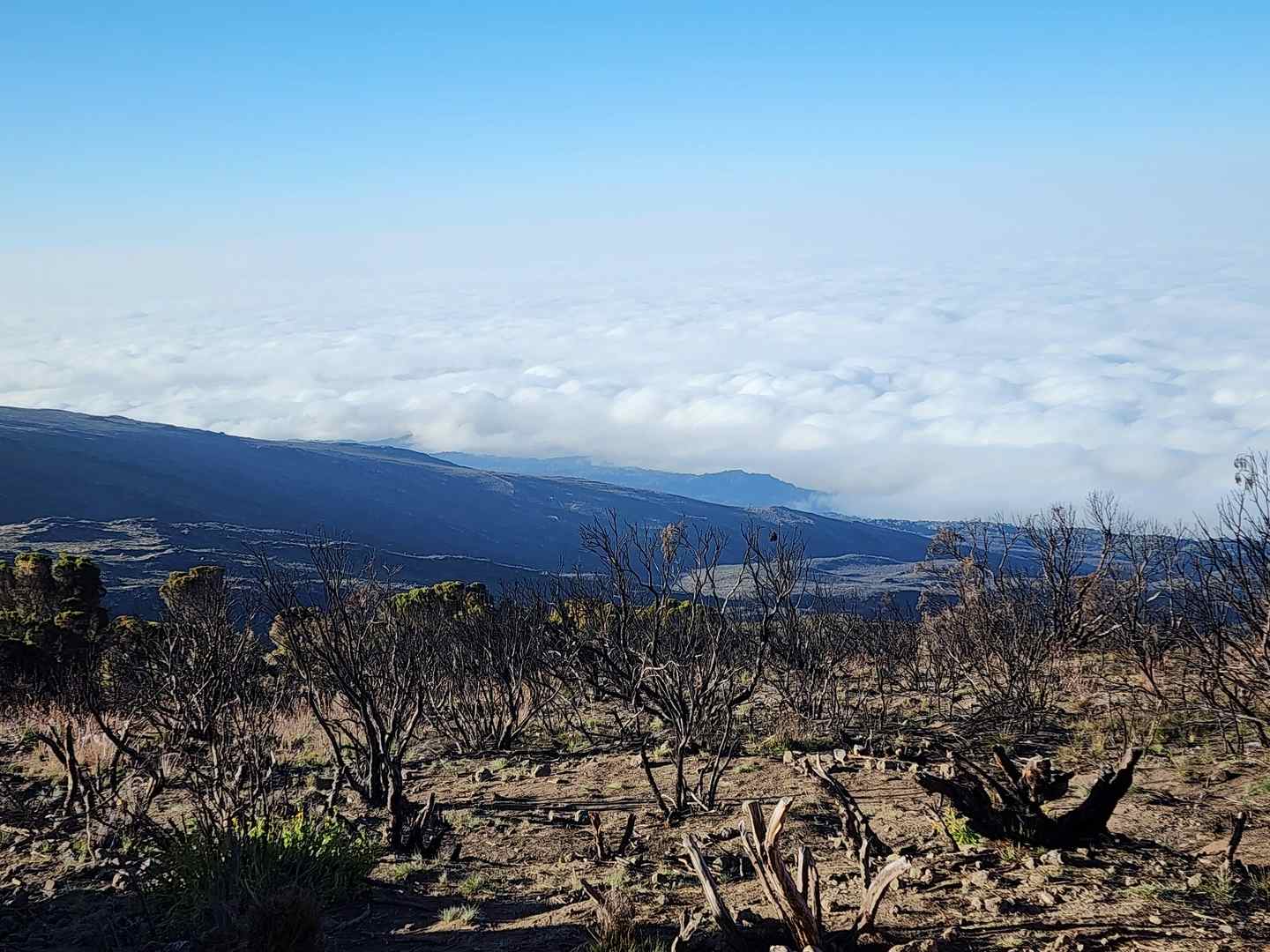
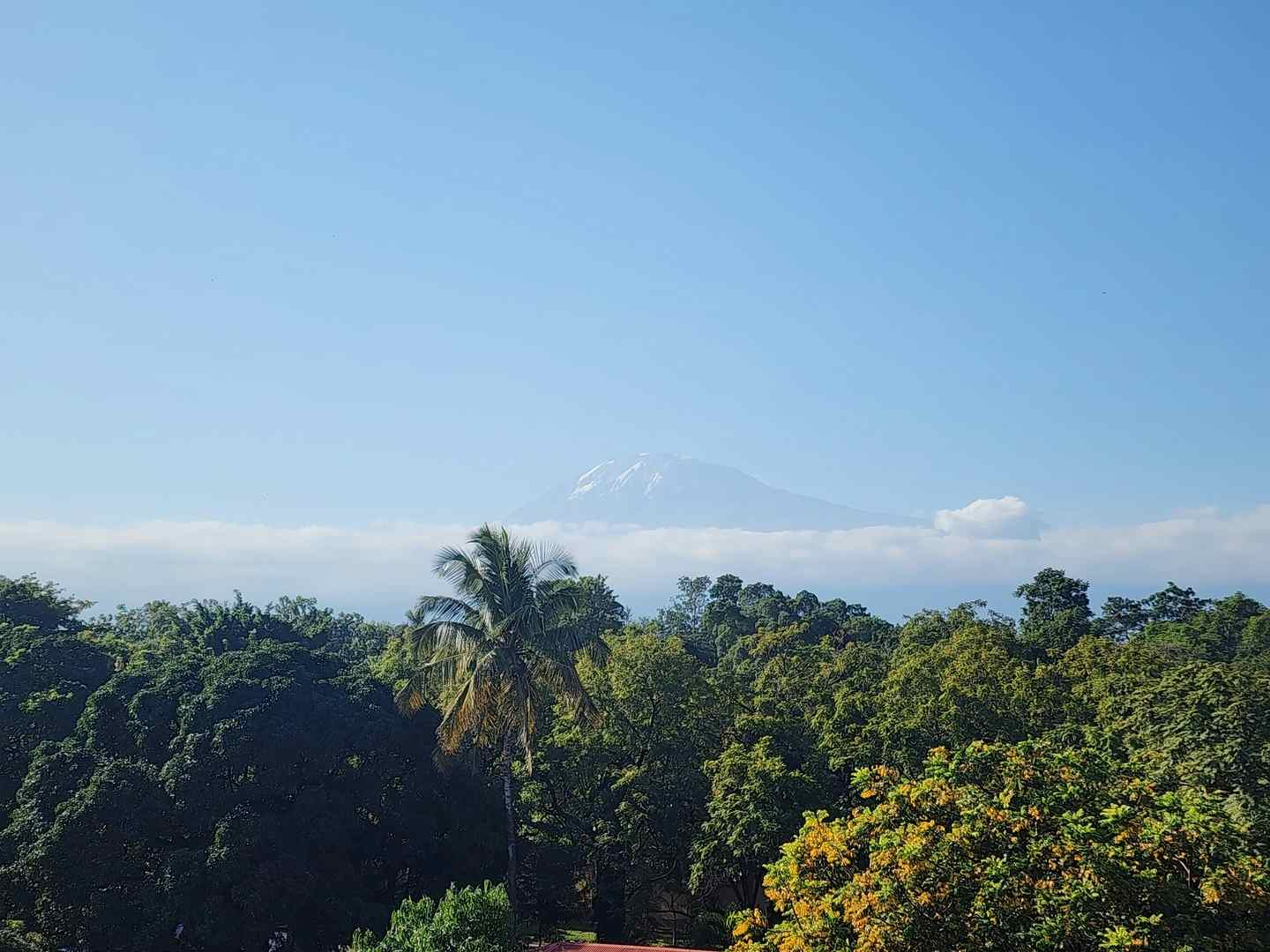
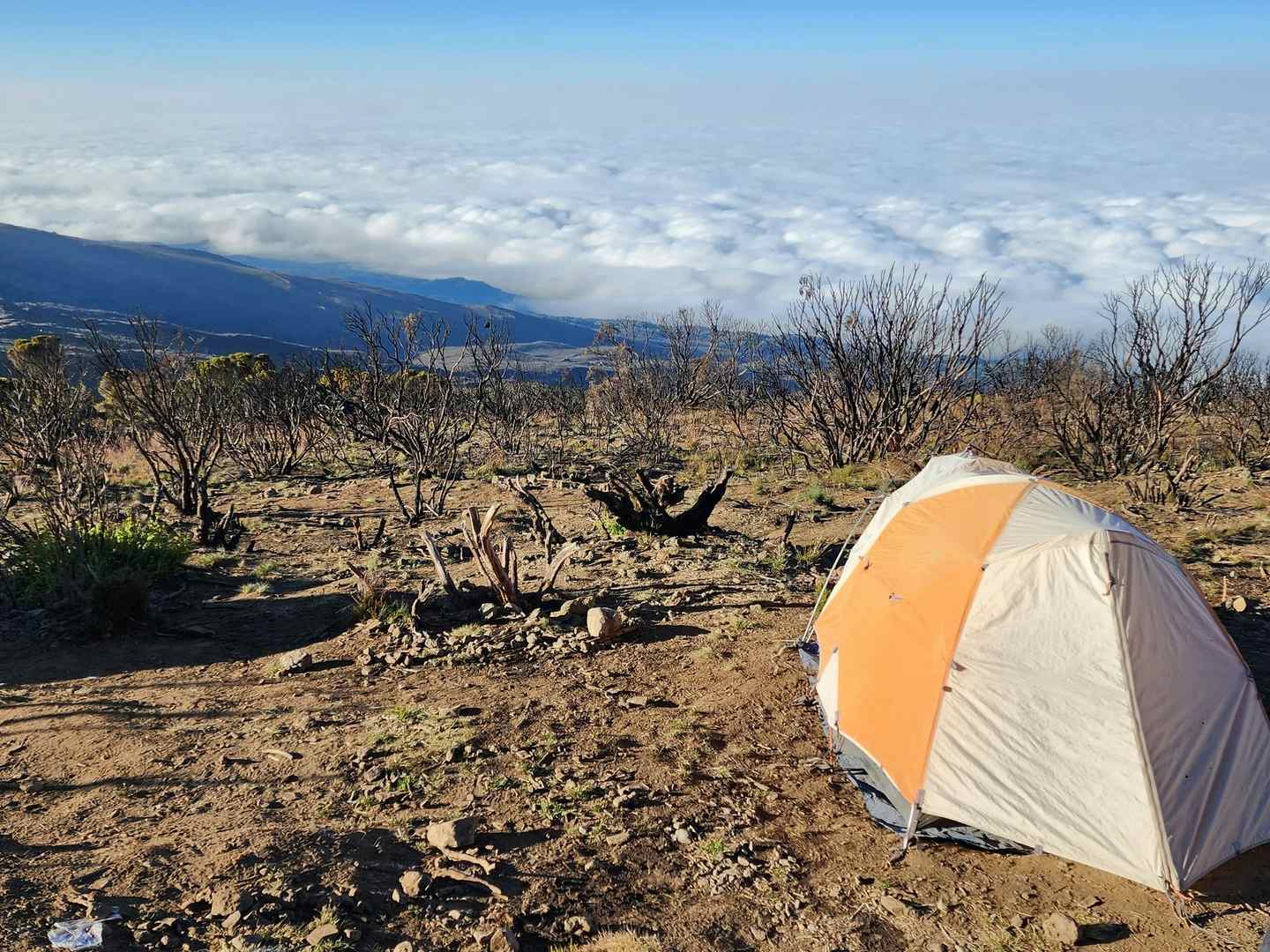
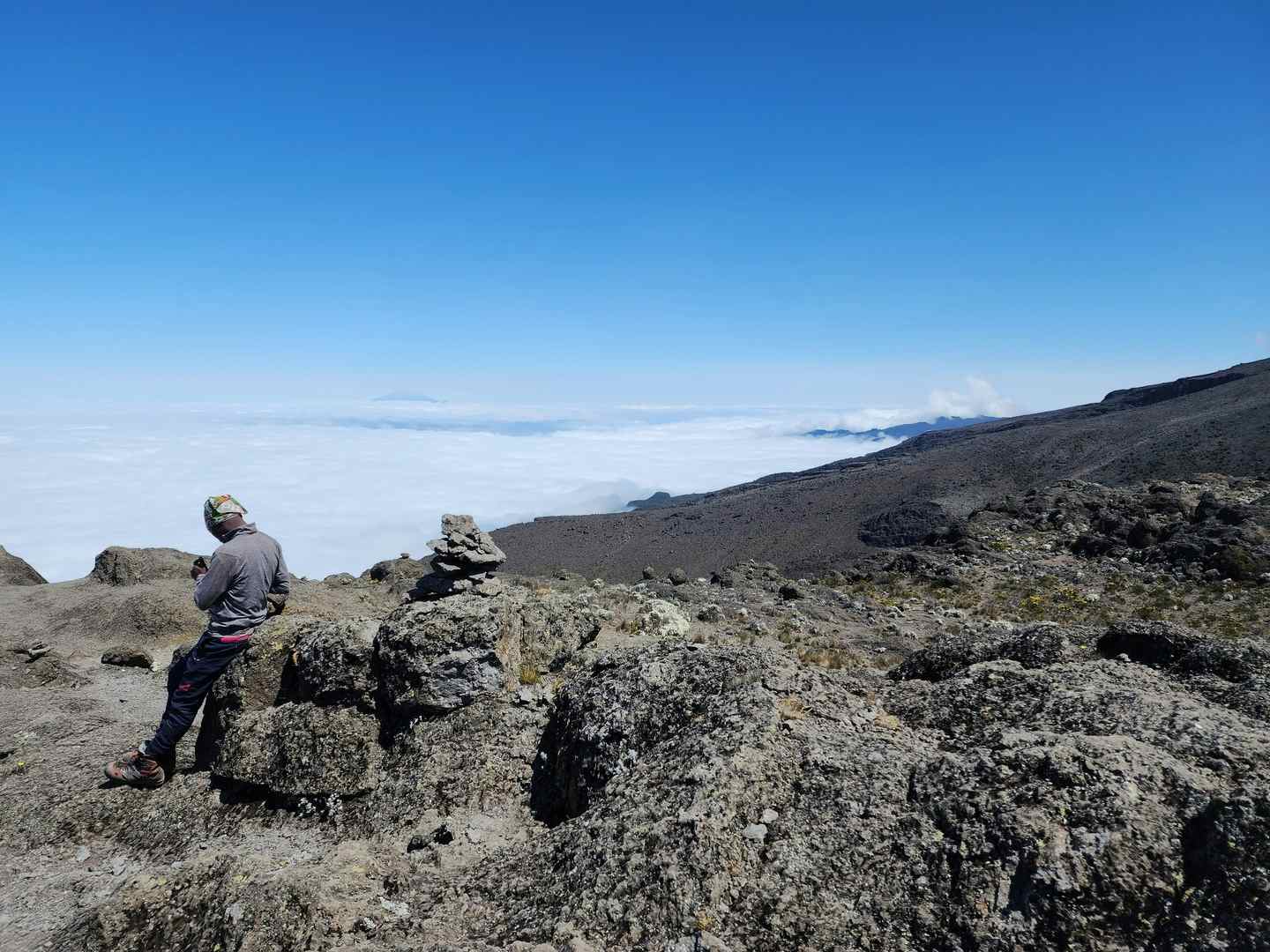
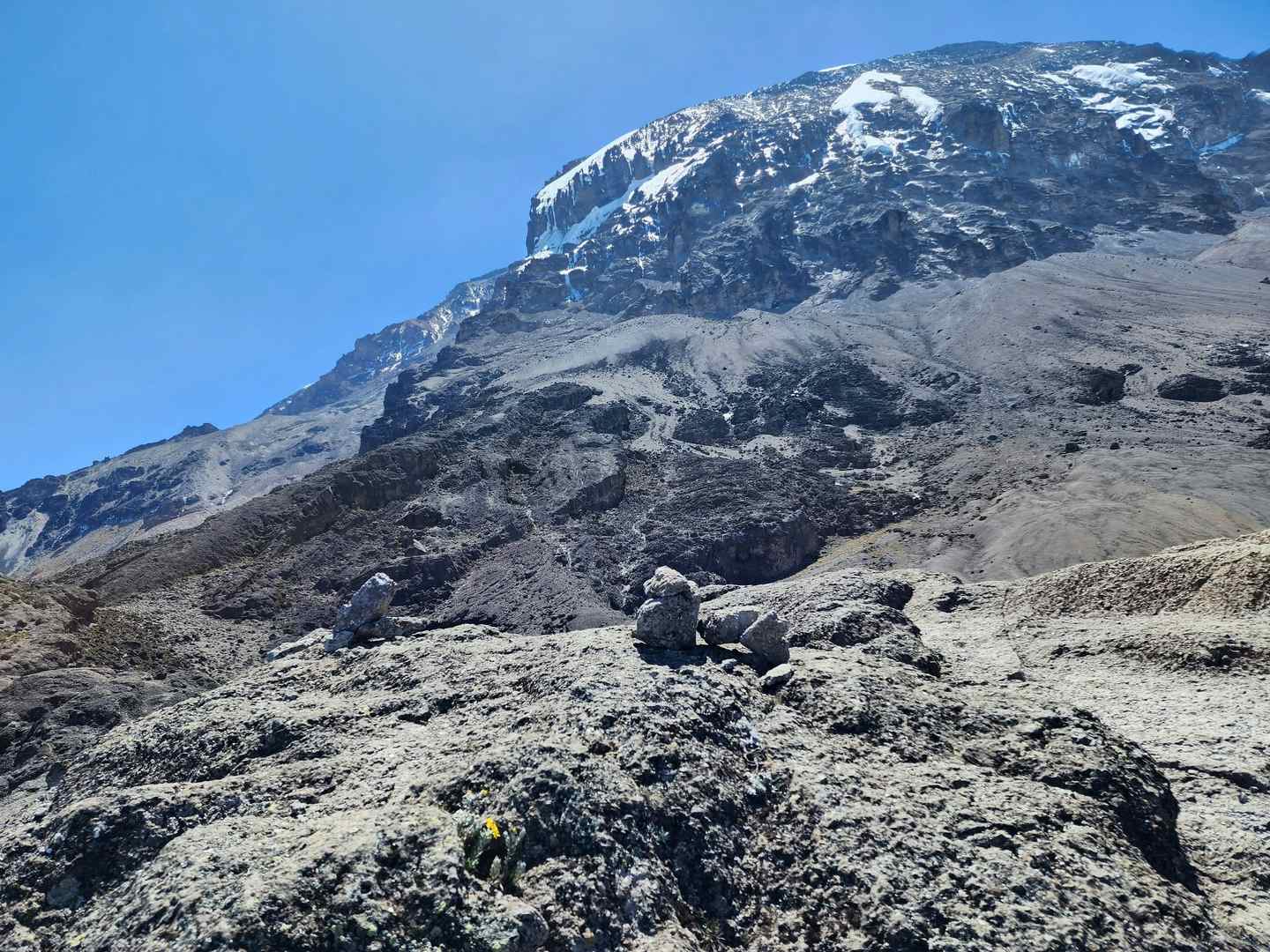
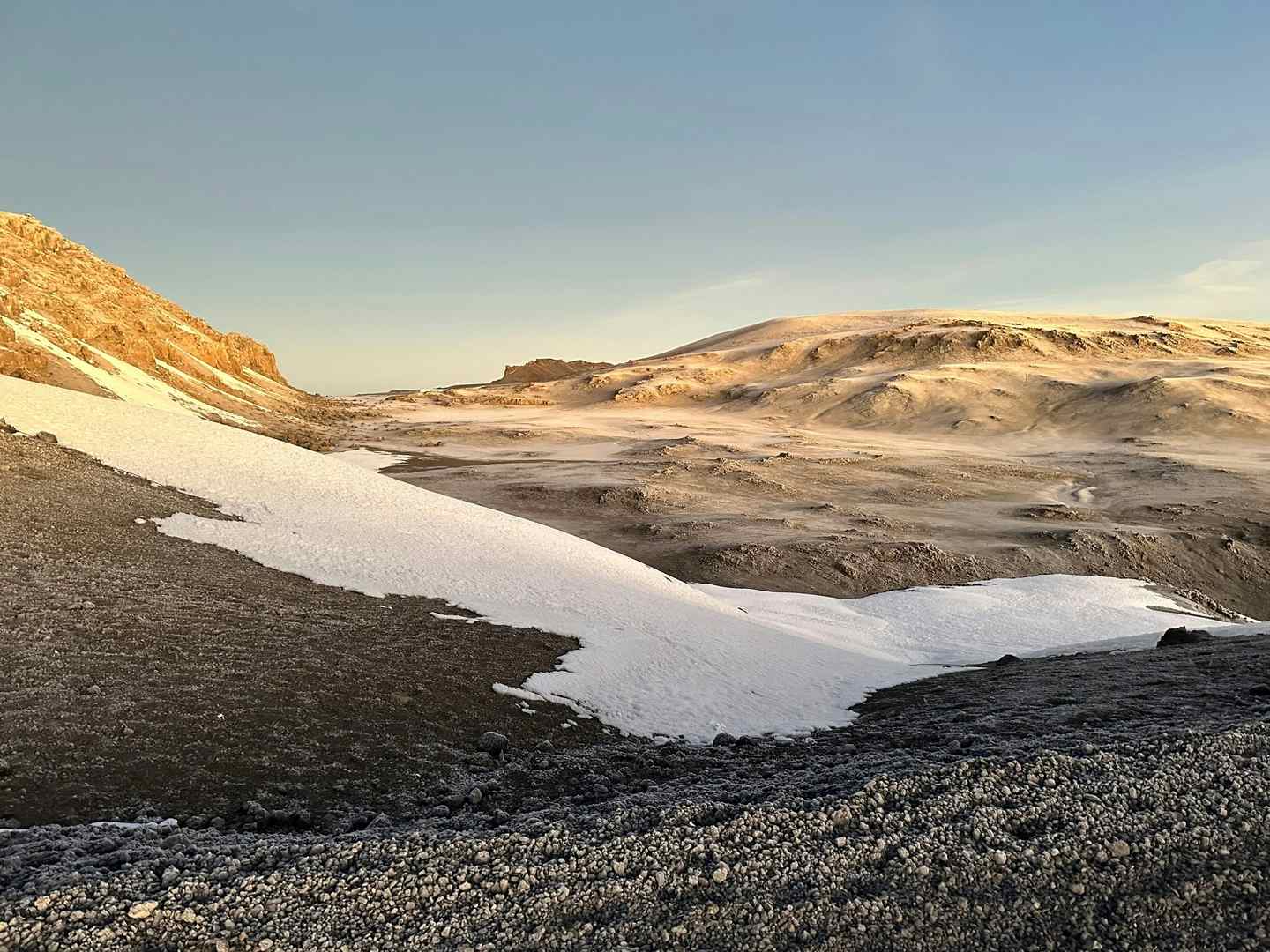
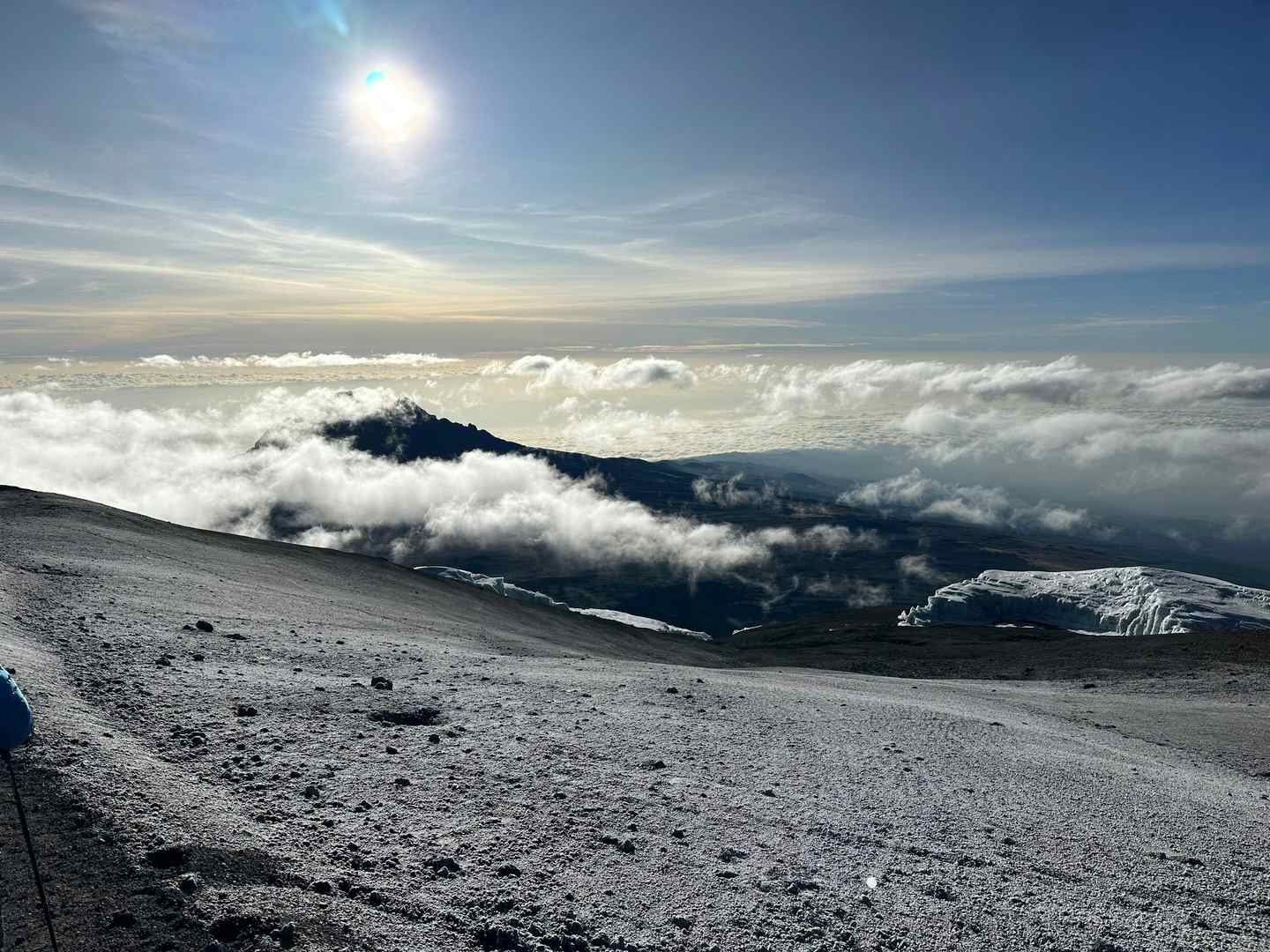
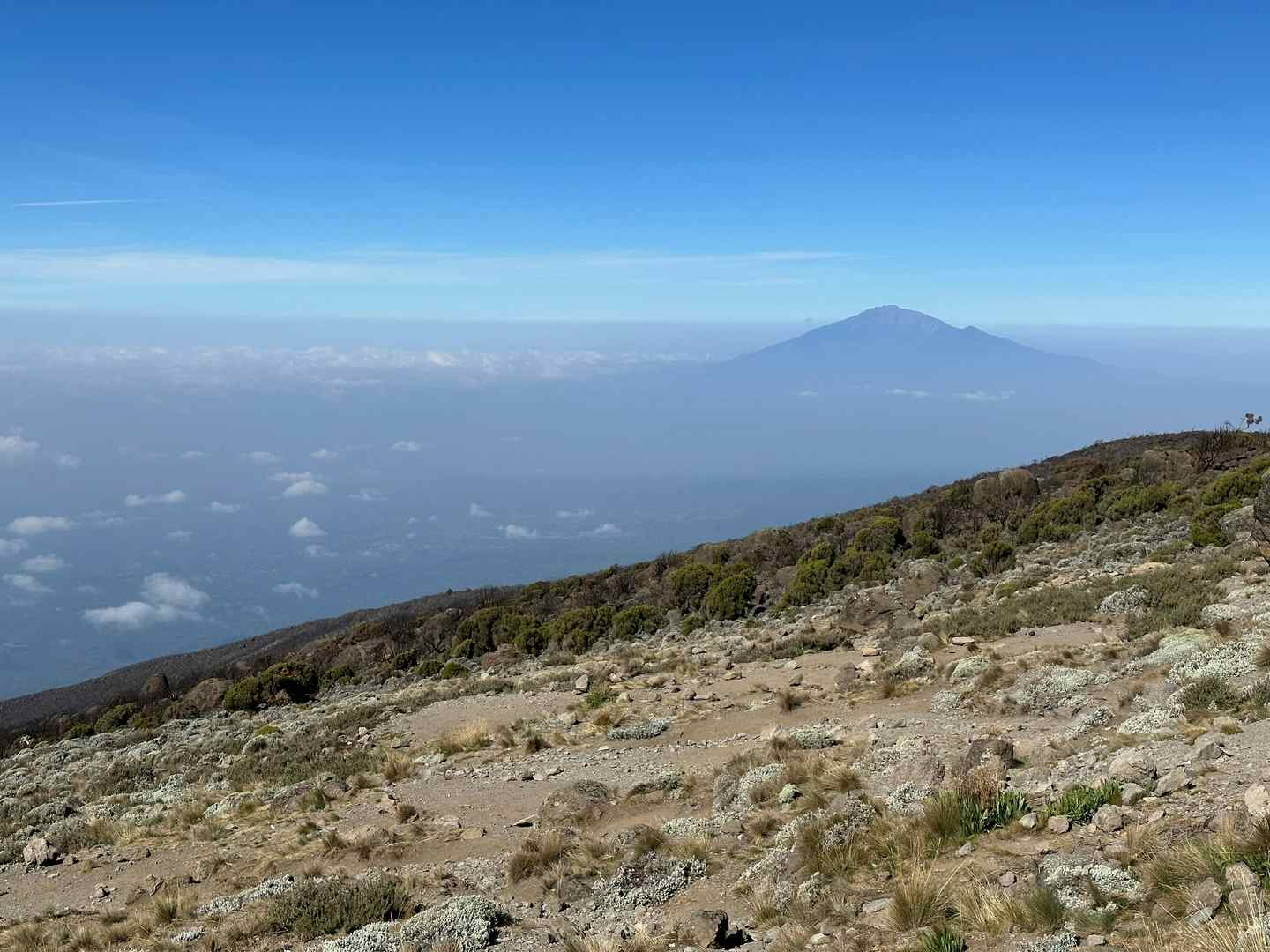
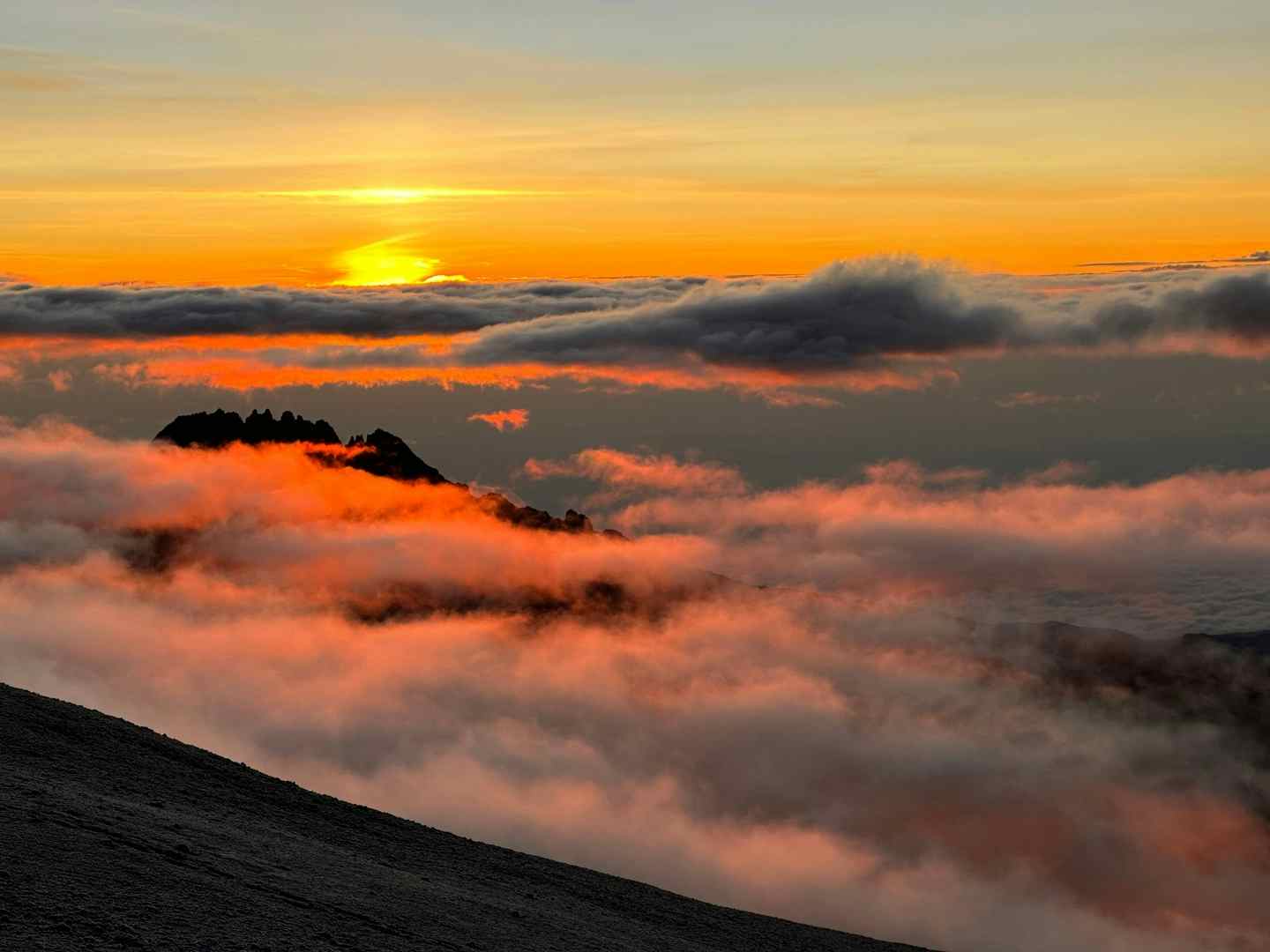
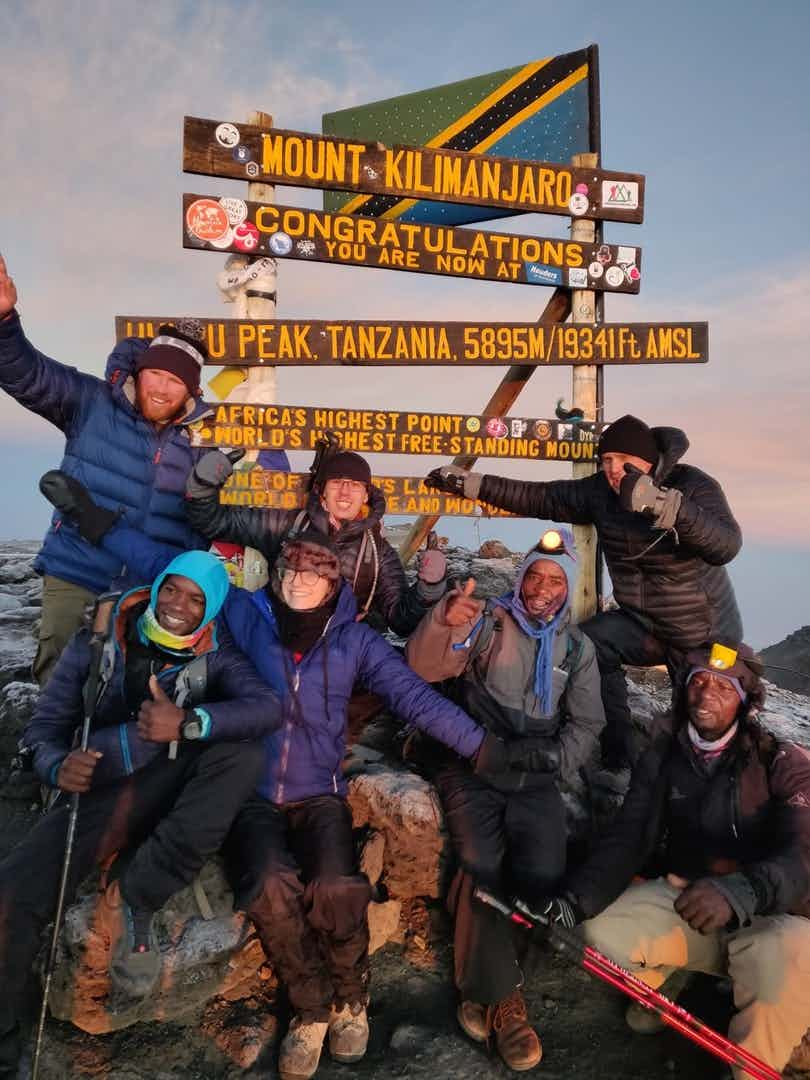
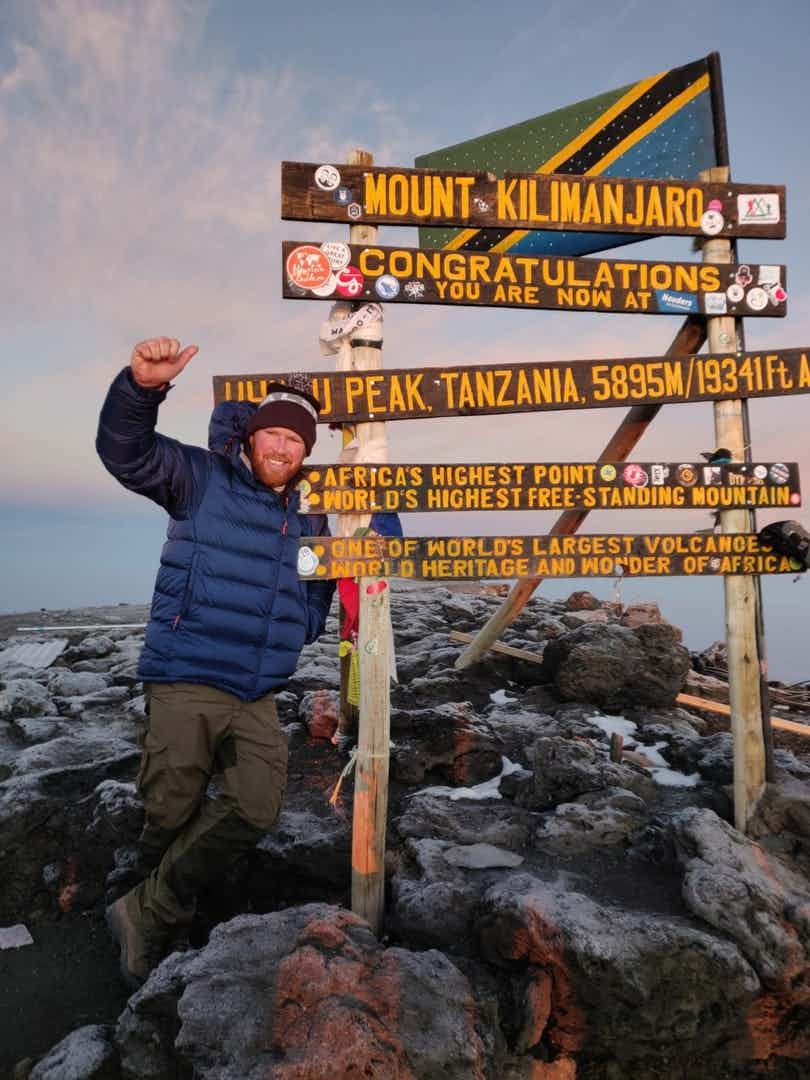
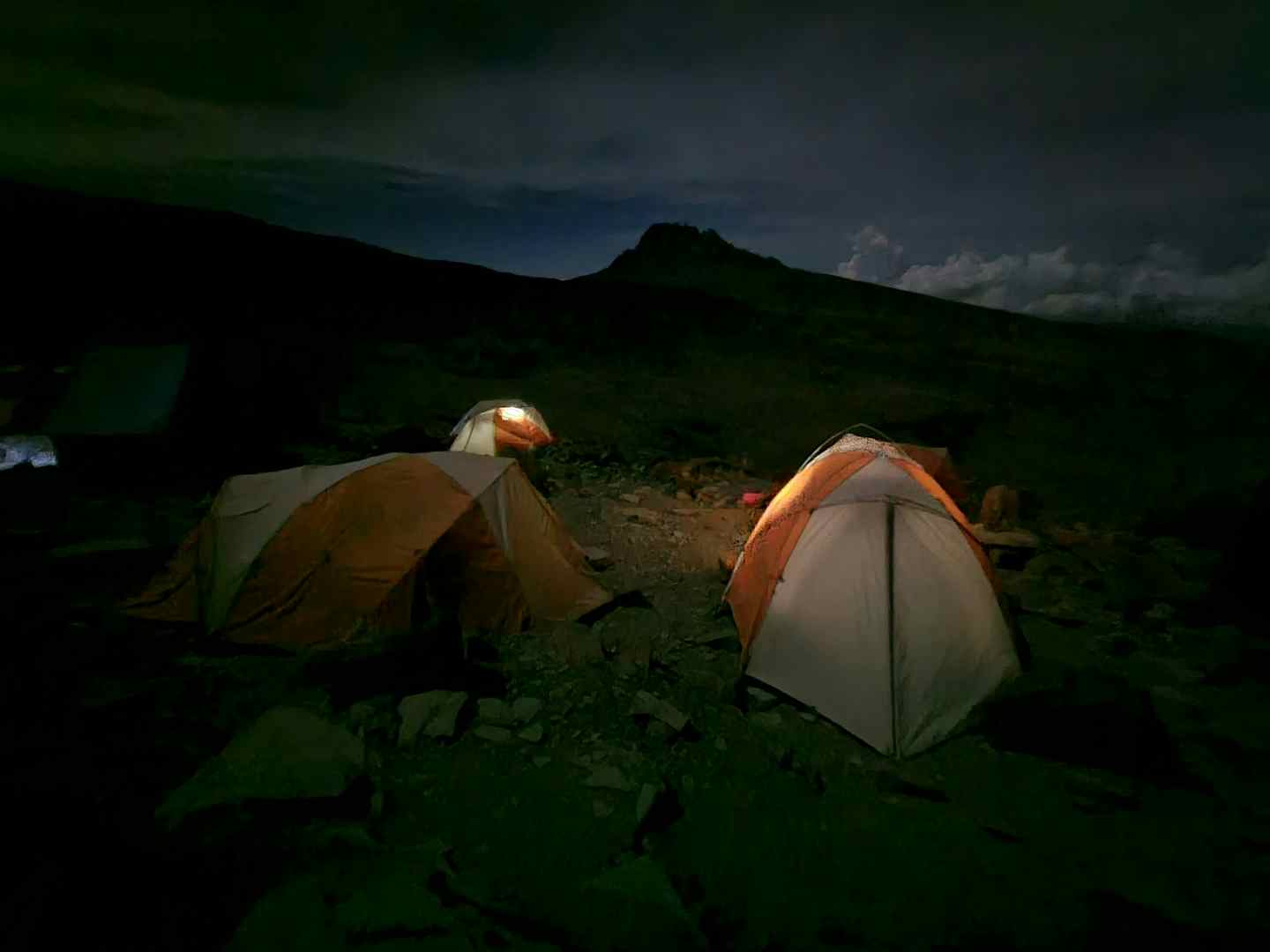
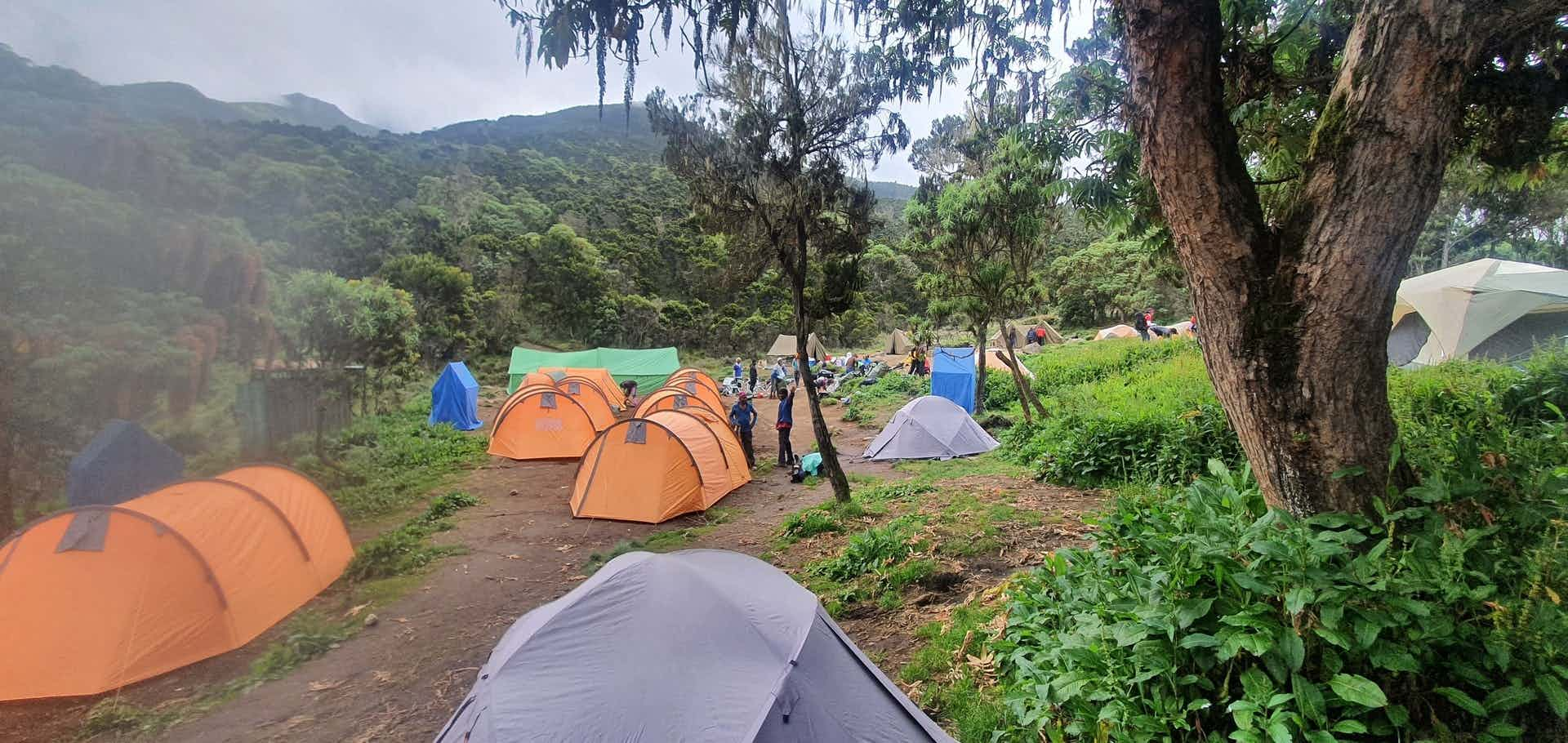
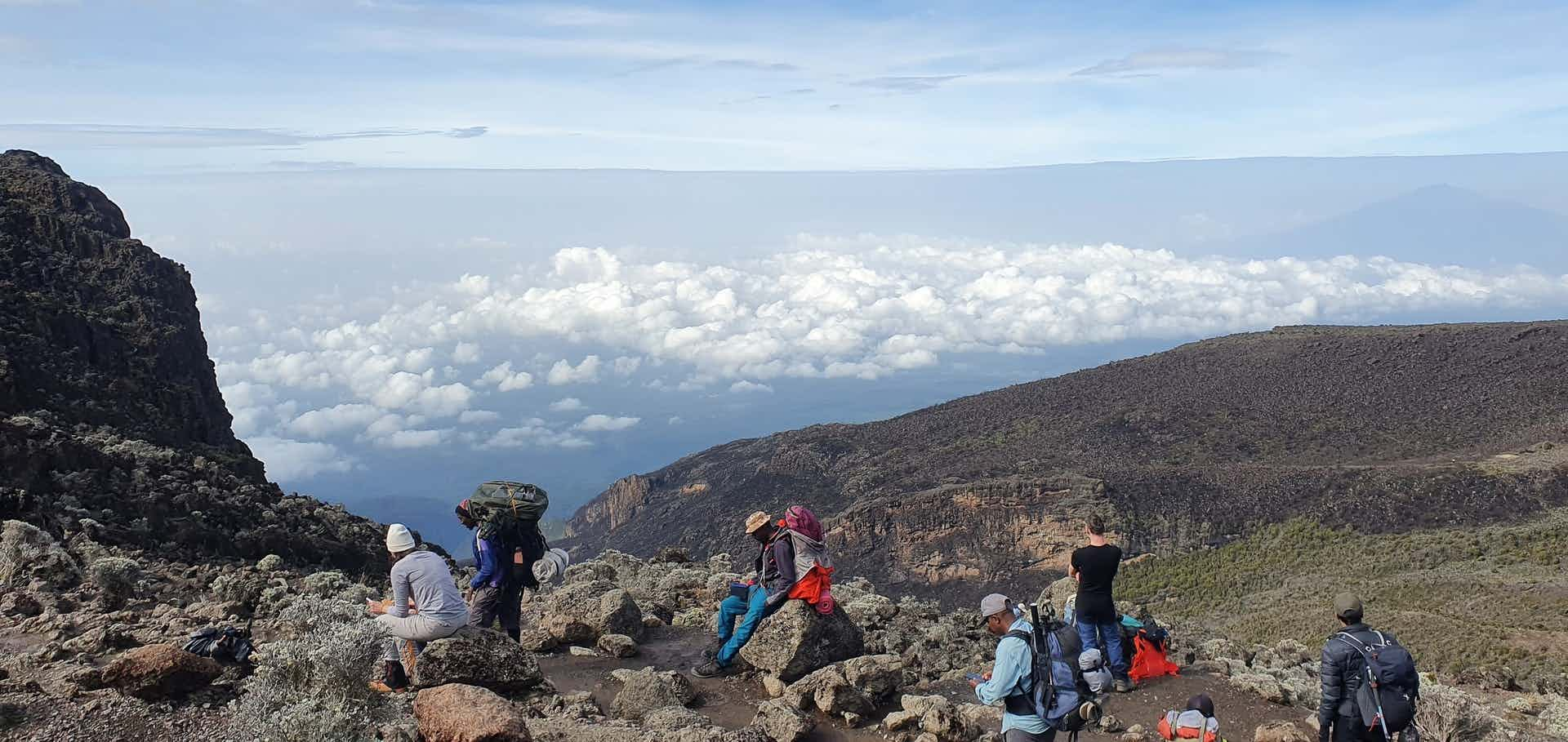
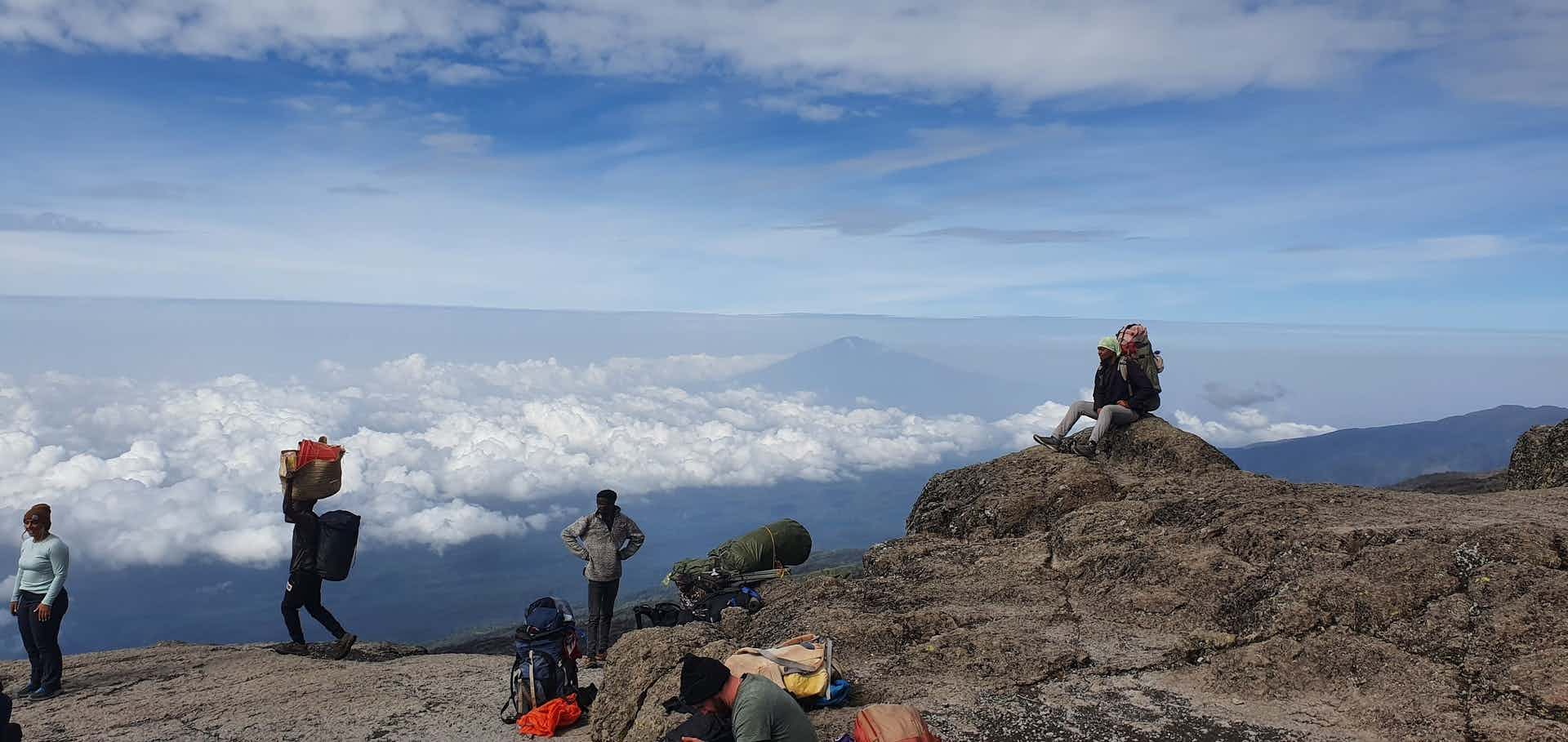
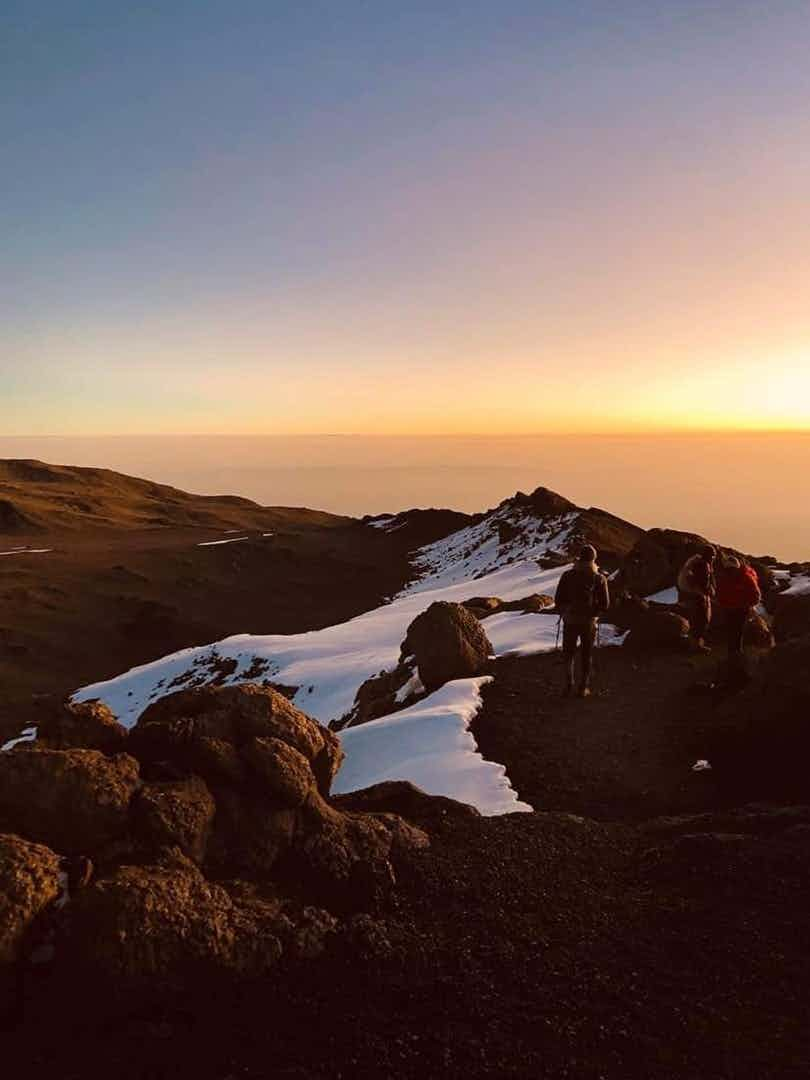
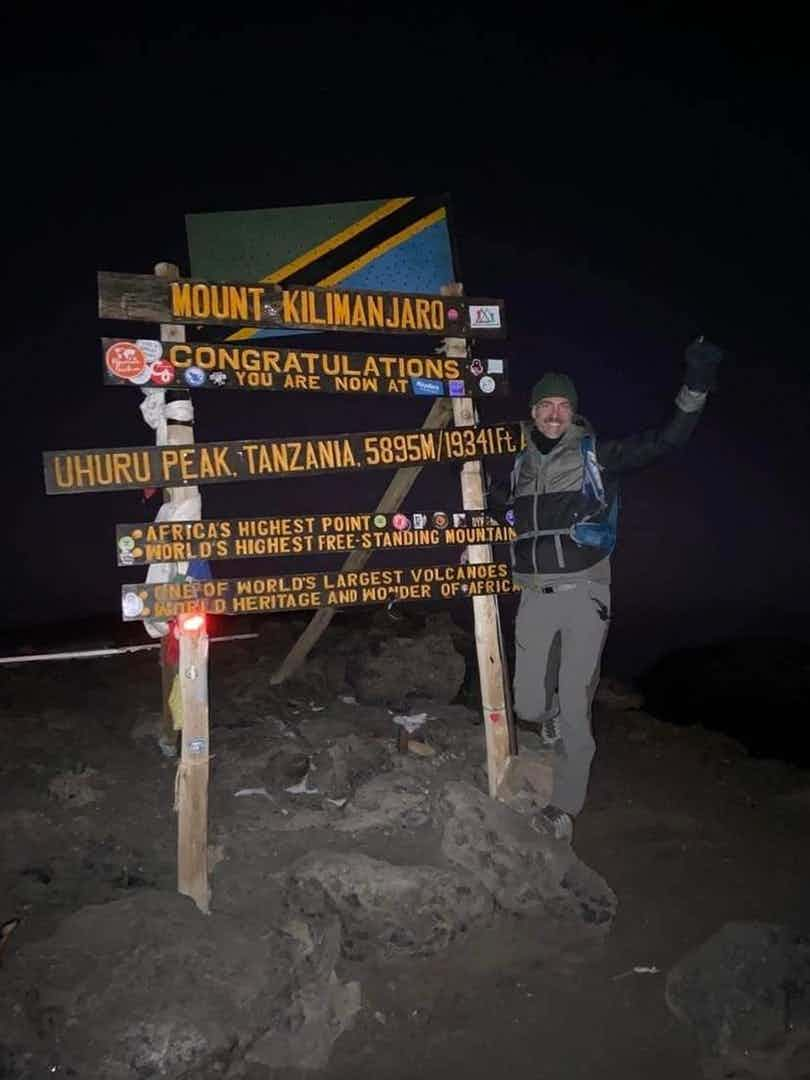
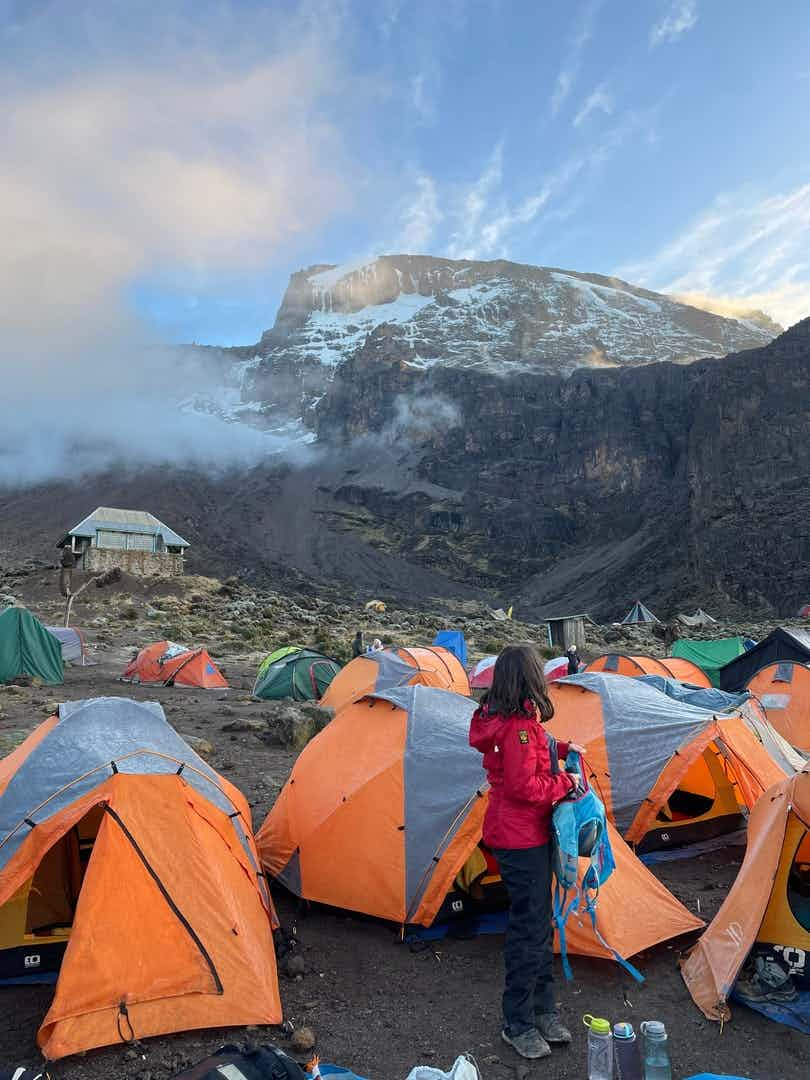
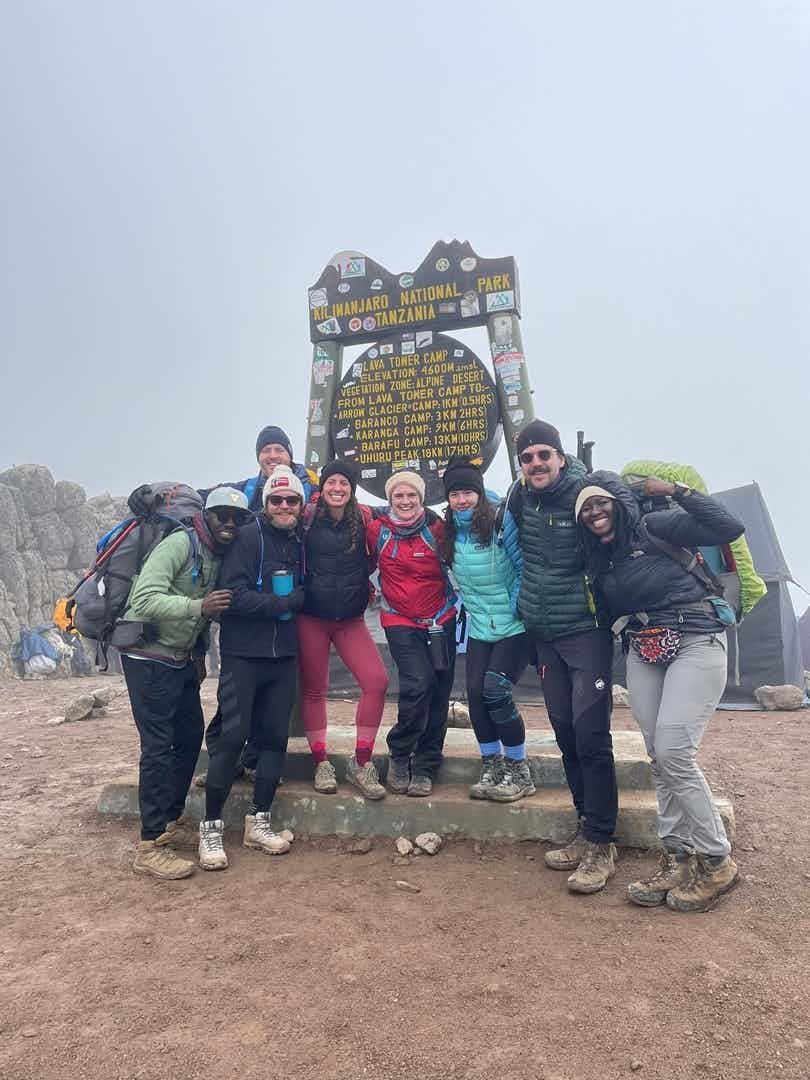
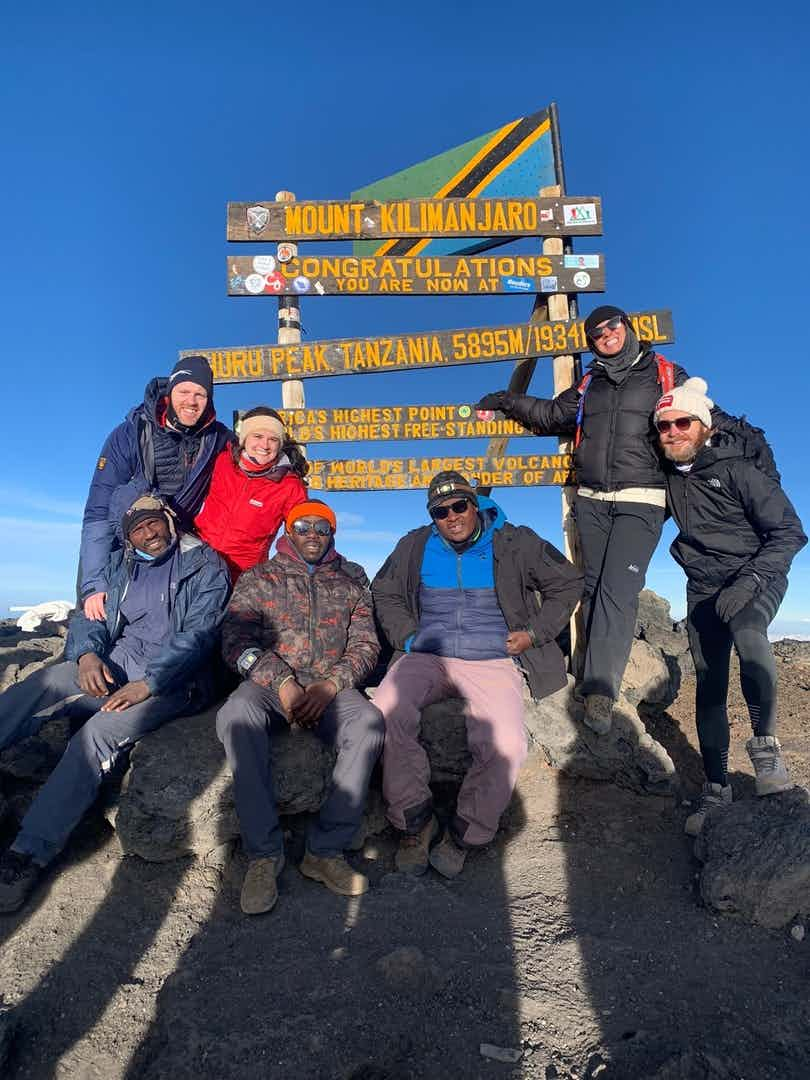
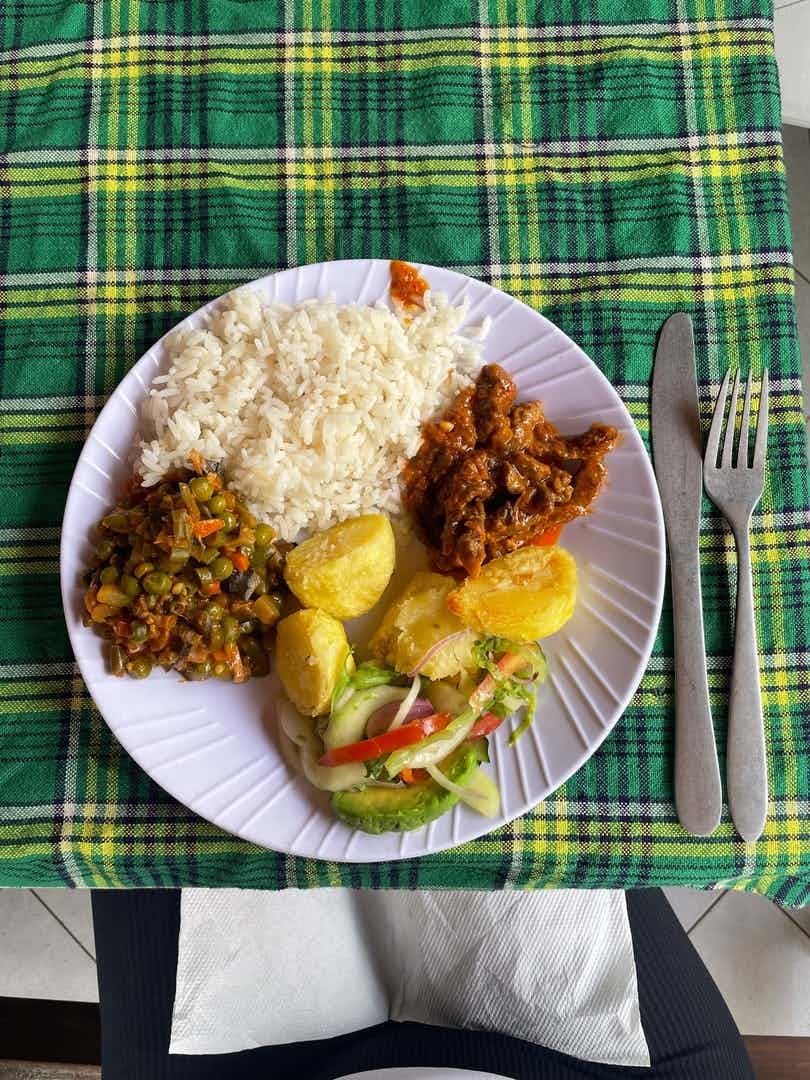
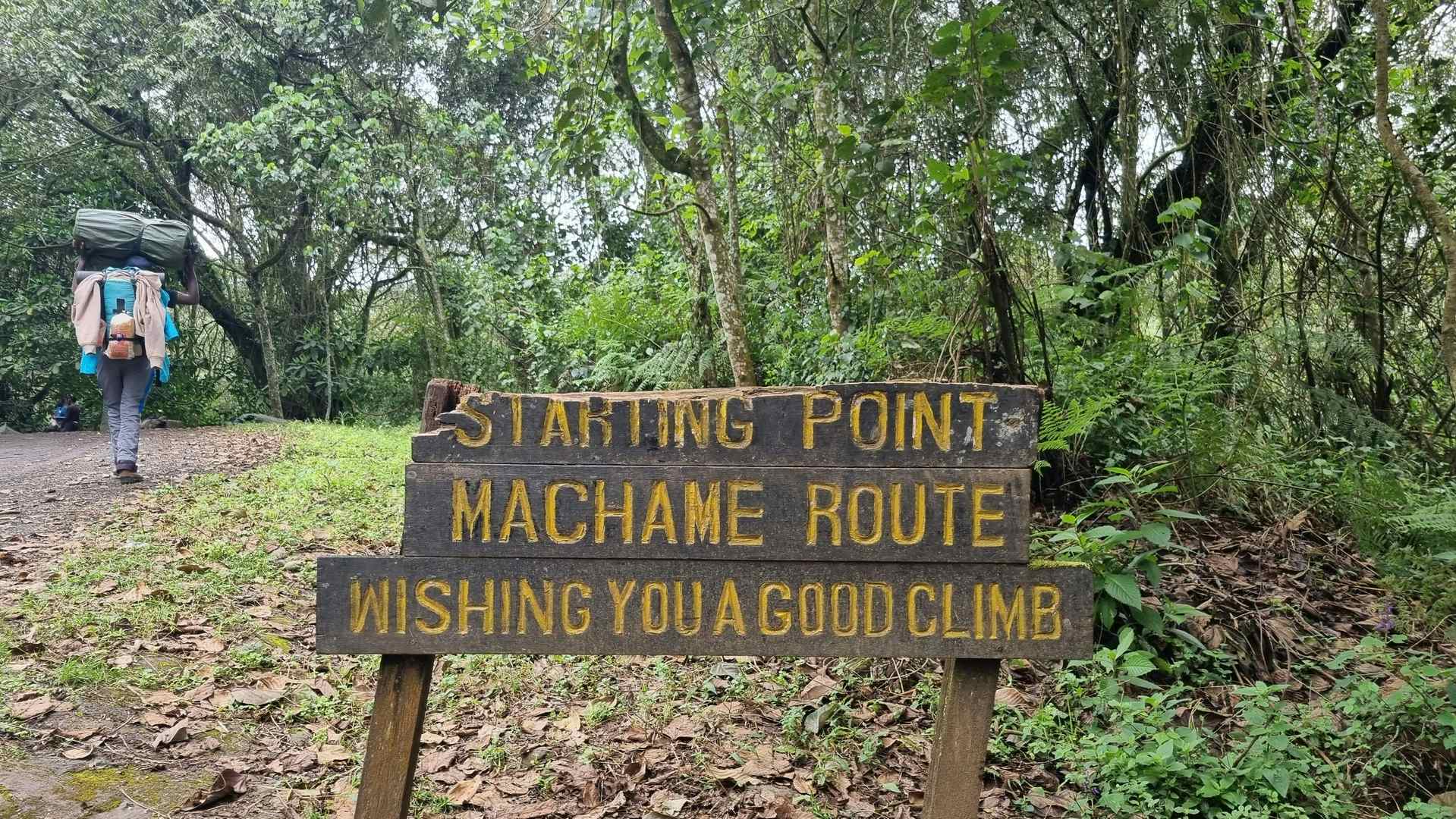
Climb to the summit that's on every adventurer's hit-list: the iconic 5895m peak of Mount Kilimanjaro
Bask in a backdrop of endless scenic vistas on a trail that offers a better chance of success than other, shorter routes
Trek through a variety of ecosystems including rainforest, moorland, alpine desert and beneath glaciated precipices
Fancy adding a safari to your summit? Our alternative trip to Climb Kilimanjaro and Go on Safari does just that
Key Information
Day 1
Welcome to Tanzania!
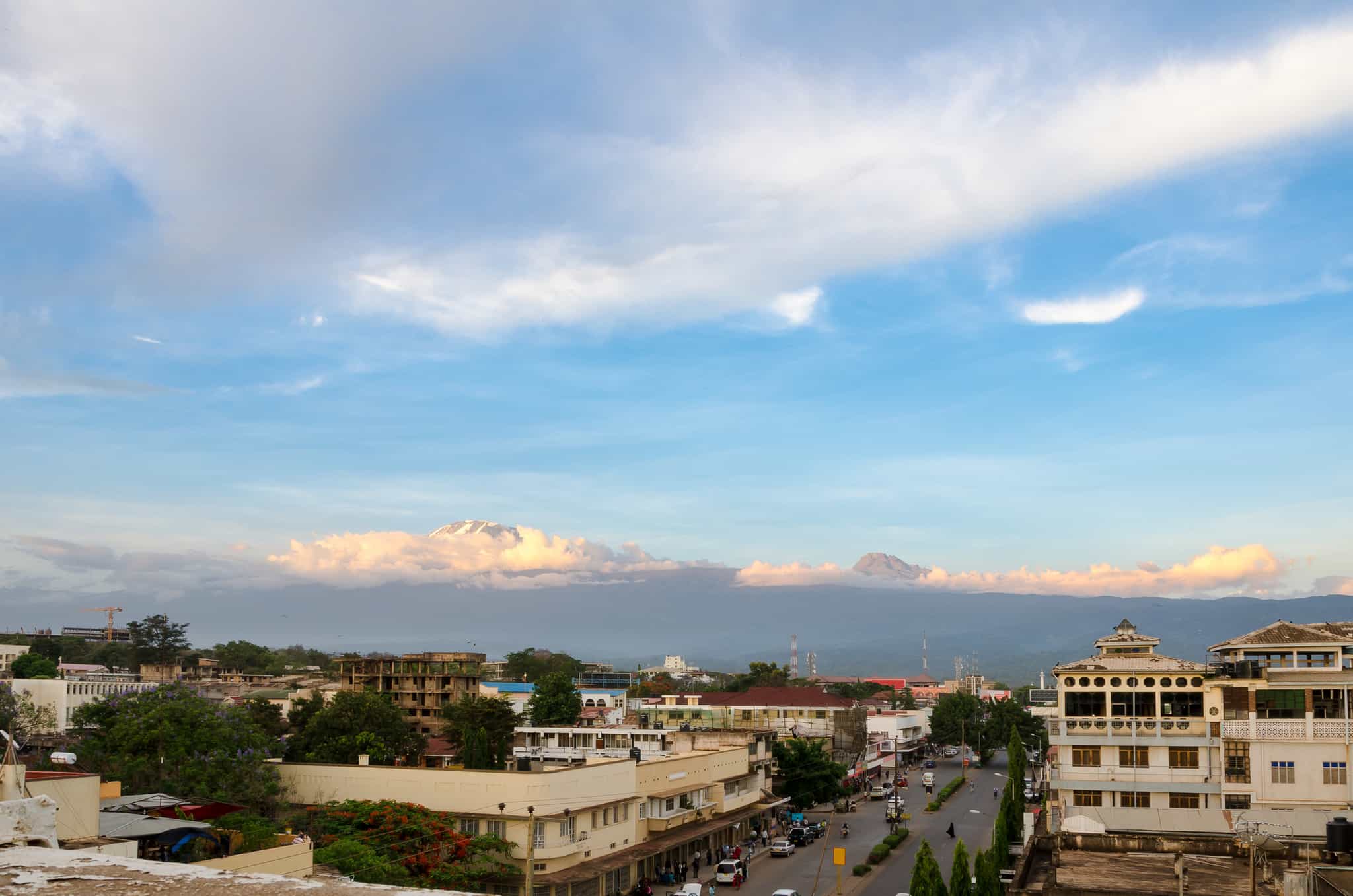
Fly into Kilimanjaro International Airport and transfer to your accommodation at the Kilimanjaro Wonders Hotel, where your host will be waiting for you. After meeting your guide for a detailed briefing and equipment check, you can get to know your fellow travellers and then retire for an early night, ready for tomorrow’s adventure.
Day 2
Machame Gate (1800m) to Machame Camp (2835m)
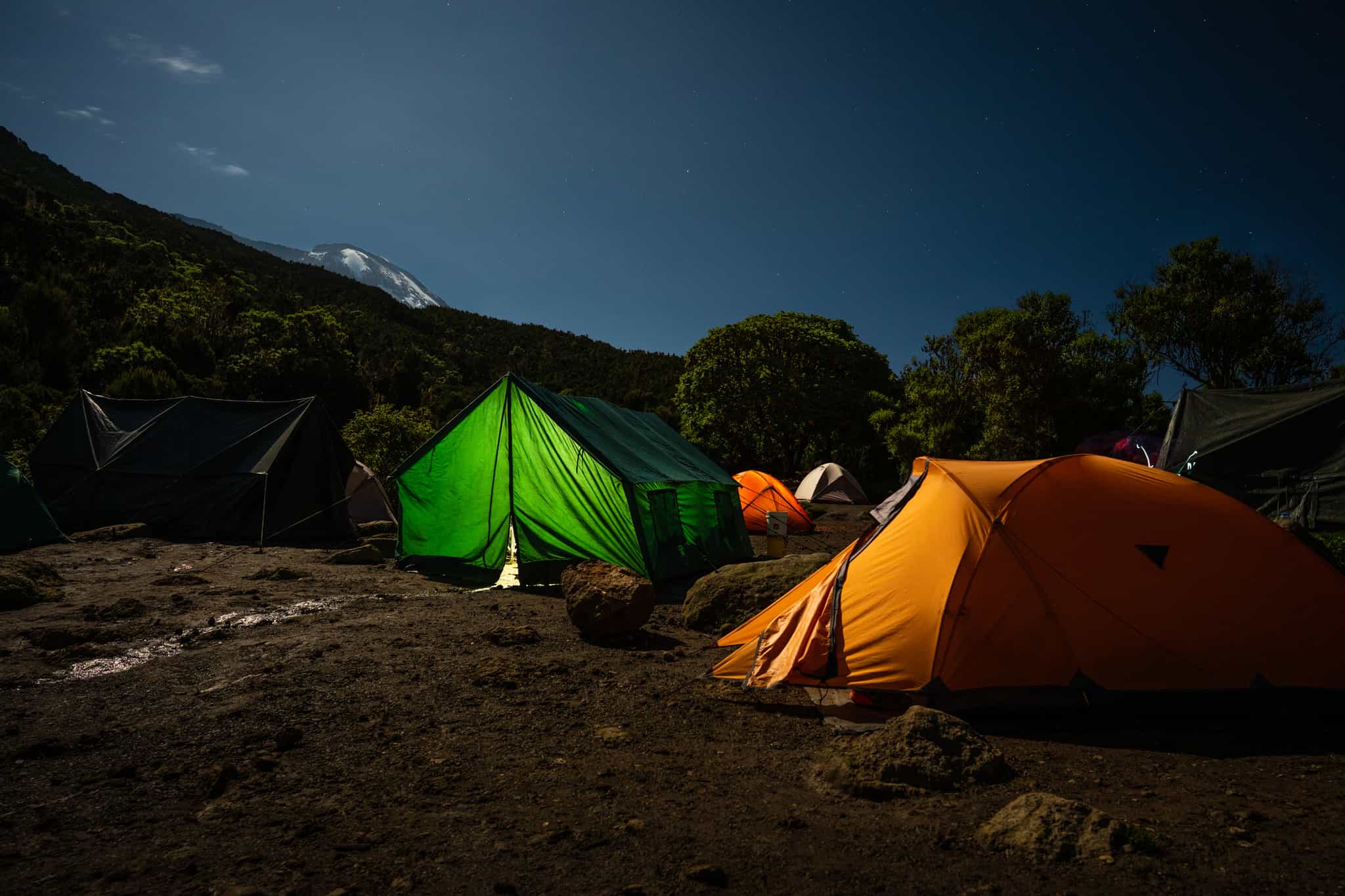
Hiking
Take a 45-minute drive through the mountain village of Machame to the Kilimanjaro National Park Gate where your ascent will begin. Hike through the lush rainforest and along winding trails and learn about the local wildlife, perhaps even spotting a blue monkey or a tree hyrax. Have your gaiters and trekking poles at the ready, as the trail can be muddy and slippery at the lower elevations. Reach your campsite, settle in and enjoy your first night on the trek.
Day 3
Machame Camp (2835m) to Shira Camp (3750m)
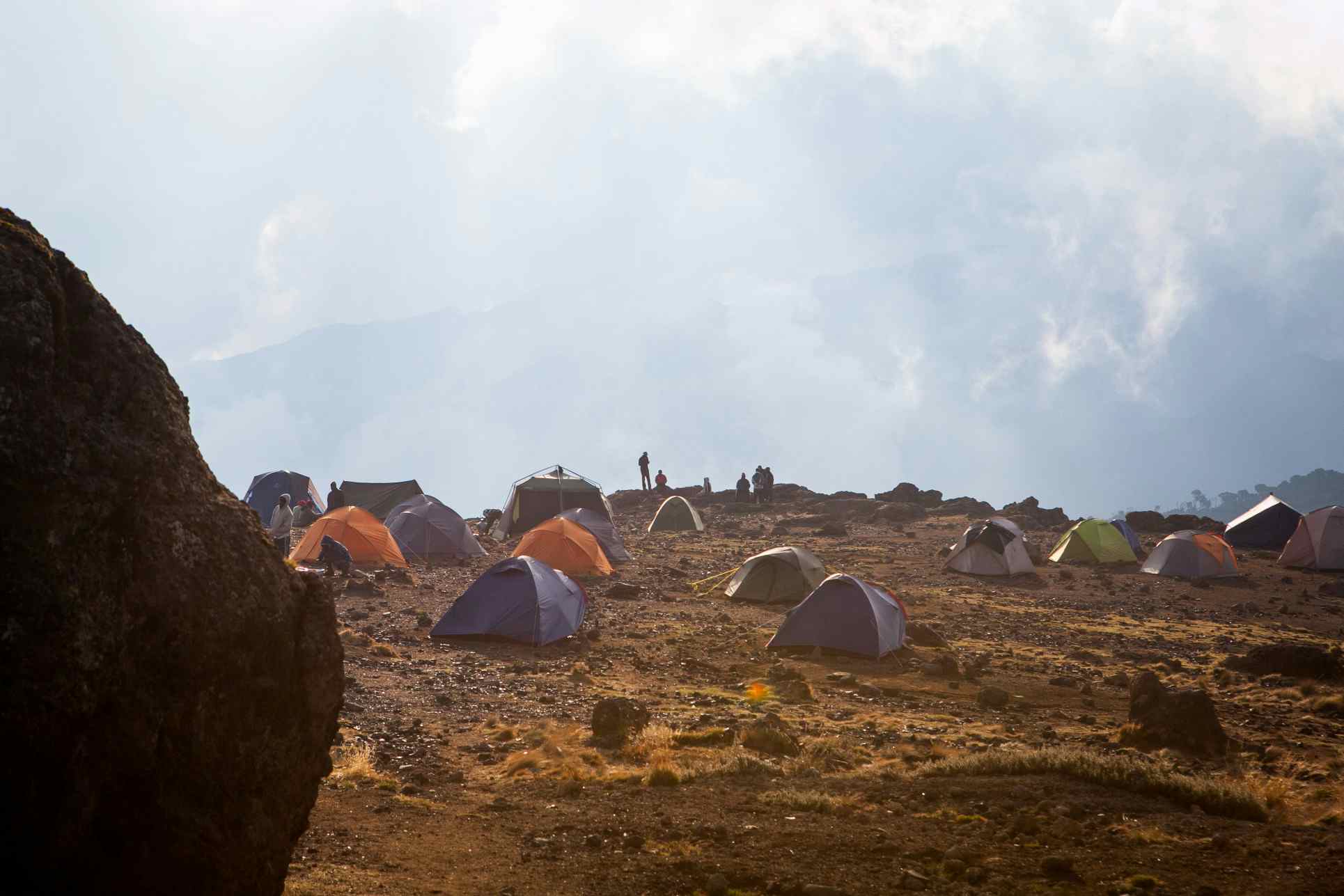
Hiking
Leave the rainforest behind you and take the ascending path through the valley and along a steep rocky ridge. From here, the route turns west into a river gorge which you will follow all the way up to Shira Camp. Drop off your daypack in your tent and climb the slope above camp for dramatic views over the surrounding plateau and the alpine landscape that awaits you next.
Day 4
Shira Camp (3750m) to Barranco Camp (3900m), via Lava Tower
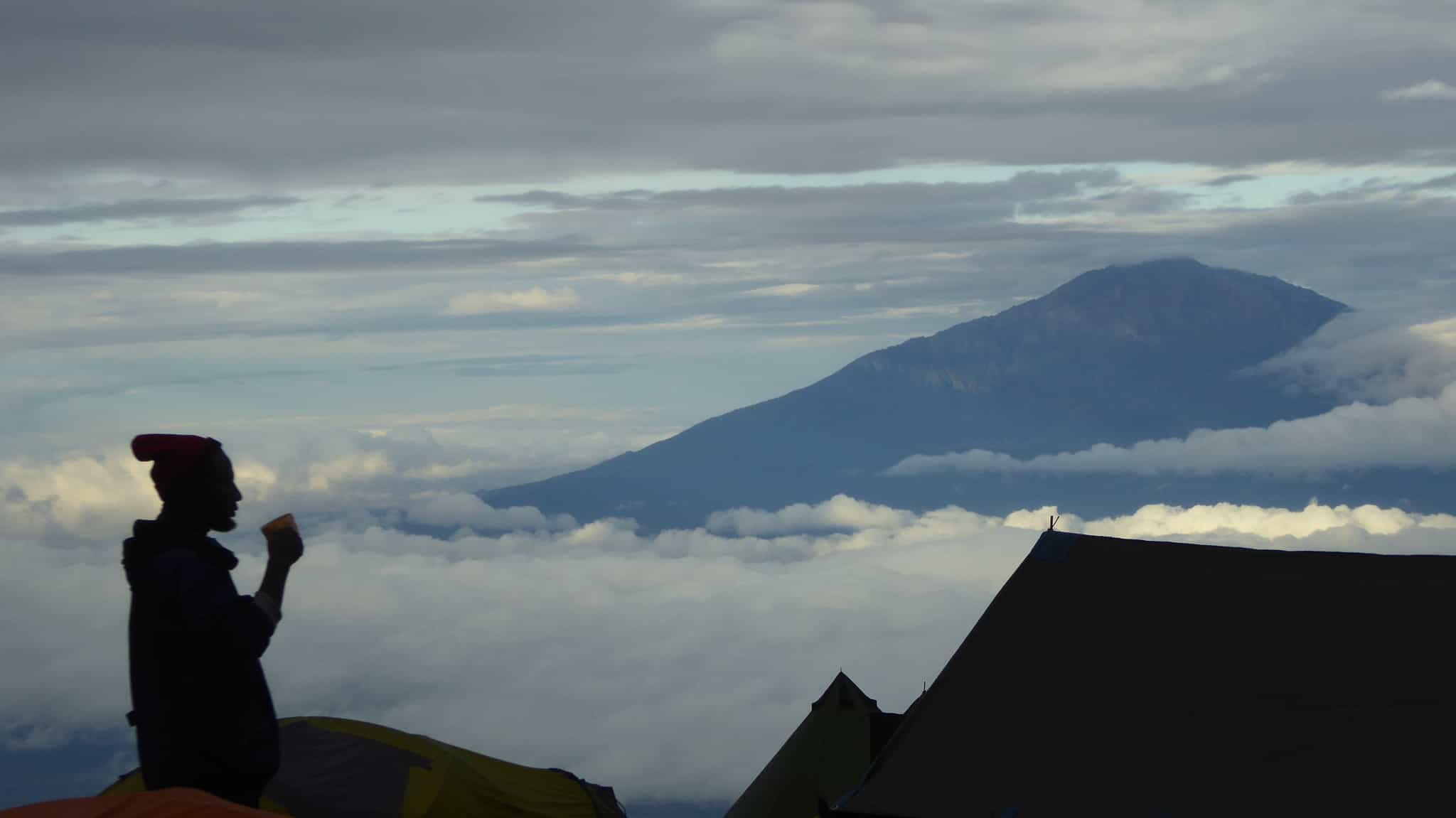
Hiking
Spend the day acclimatising as you continue the route along the alpine desert of the Shira Plateau. Hike east towards Kibo’s glaciated peak, then southeast towards Lava Tower (also known as the Shark's Tooth) at 4600m. You'll stop for lunch here to aid with acclimatisation before continuing your trek through moorland dotted with Giant Senecio trees, descending slightly to your overnight camp at Barranco where you'll have a hearty dinner and a good night’s rest.
Day 5
Barranco Camp (3900m) to Karanga Camp (3995m), via the Barranco Wall
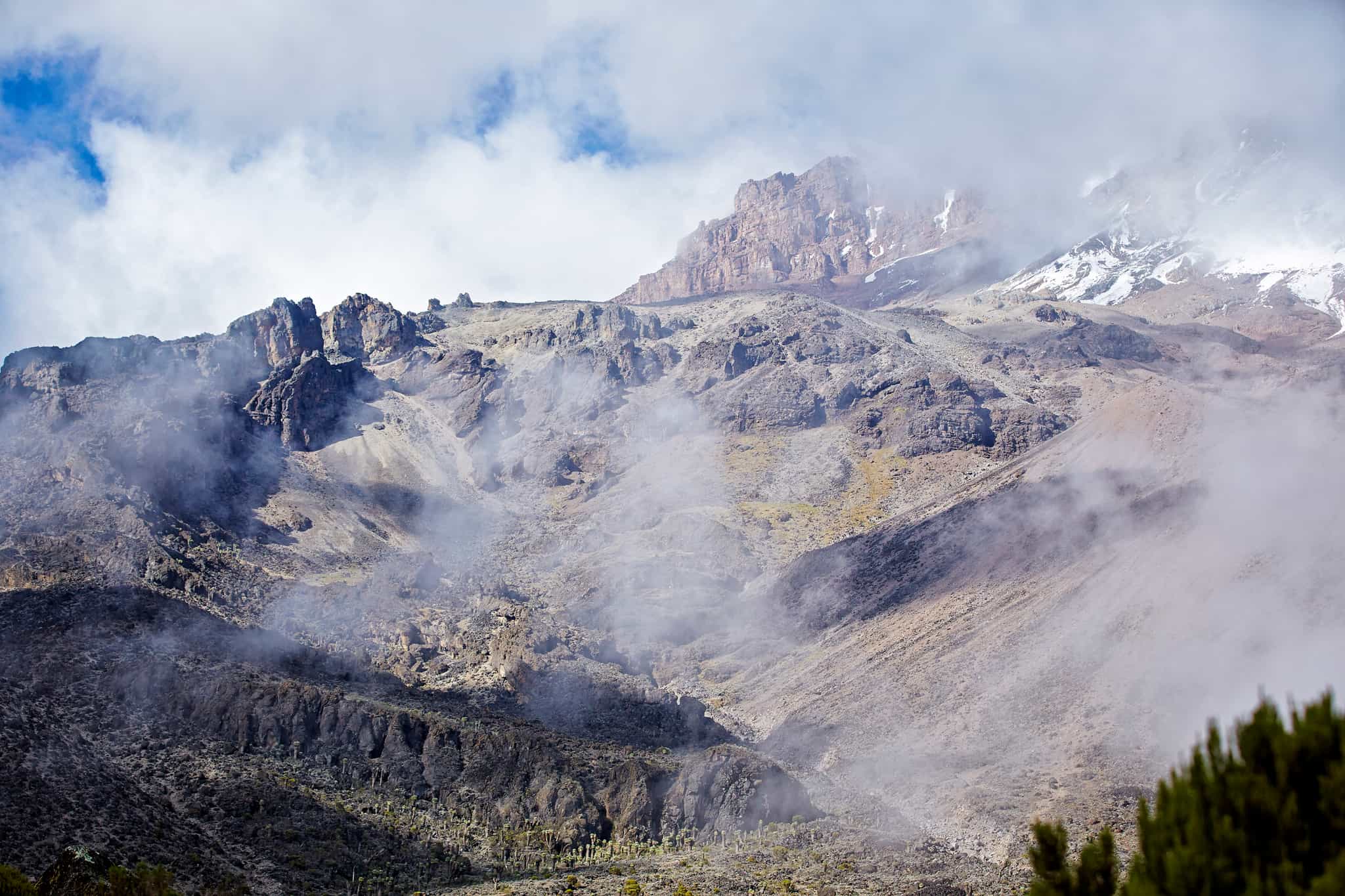
Hiking
Today is another important acclimatisation and contingency day to boost your chances of summit success. After breakfast, follow a steep ridge to the base of the Barranco Wall. This is a challenge both physically and mentally, as the wall appears higher than its 257m. Slow and deliberate steps are the trick to an easier scramble to the top (most hikers find it easier than anticipated, so fear not!). At the top, look out over the Heim Glacier and then wind up and down the Karanga Valley to reach your base for the night.
Day 6
Karanga Camp (3995m) to Barafu Camp (4673m)
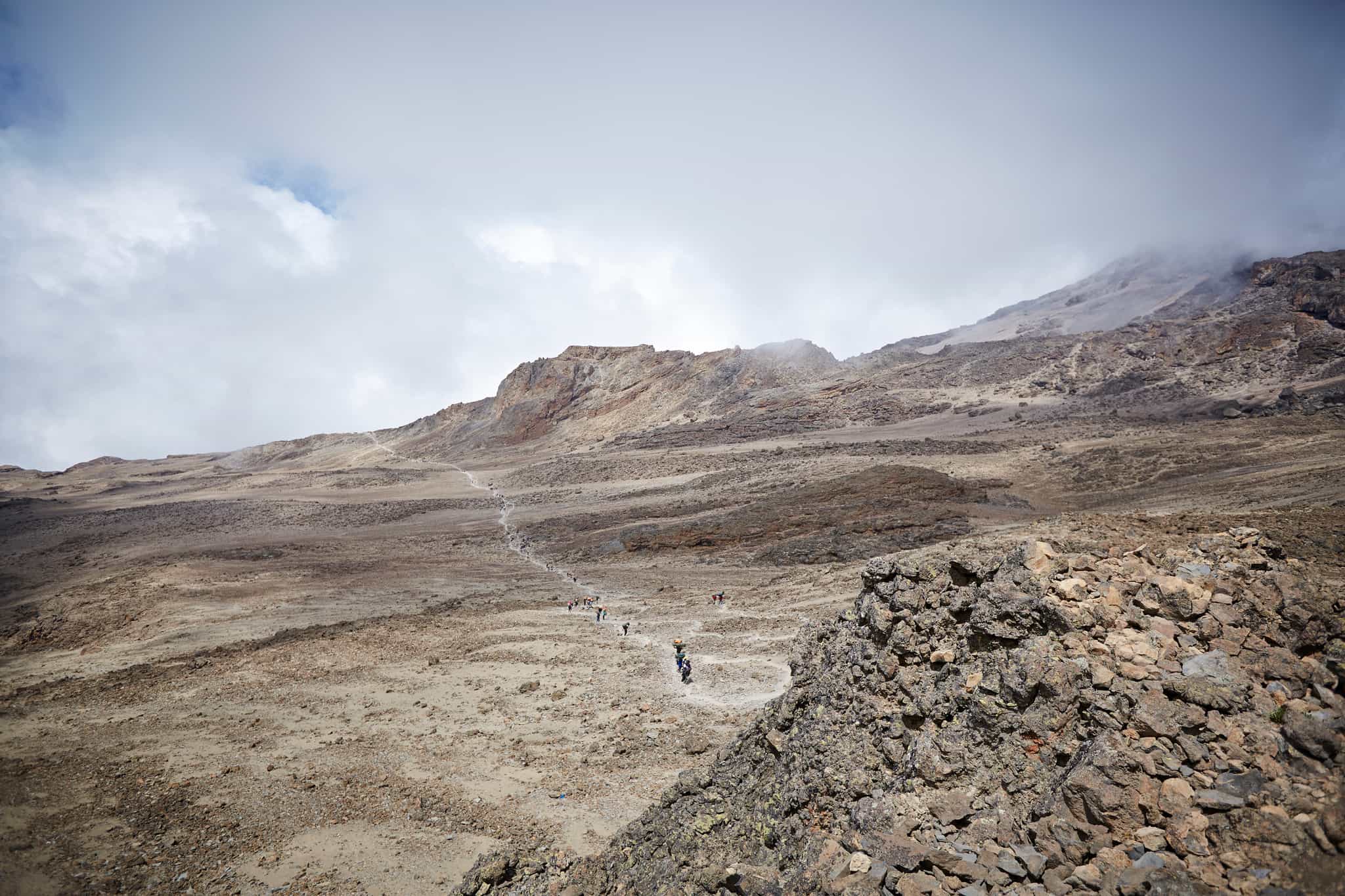
Hiking
Follow a short but steep trail through the ever-thinning air to Barafu Camp – your last stop before summit day. This camp is located on a rocky and exposed ridge, 'barafu' means 'ice' in Swahili. Have an early dinner, get yourself ready for the summit push in the morning and get some sleep. Nearly there!
Day 7
Summit day

Hiking
Set off in the dead of night to begin the most physically and mentally challenging part of the trek. With head torches on, ascend slowly through heavy scree towards Stella Point (5756m) on the crater rim, followed by a further ascent to Uhuru Peak (5895m) – the highest peak on Mount Kilimanjaro, the highest point in the whole of Africa and possibly your greatest trekking accomplishment. After a rest and some photographs, begin the long descent over dusty terrain forged by volcanic ash, eventually dropping back down into moorland as you reach Mweka Camp (3100m) for a well-deserved rest.
Day 8
Descend from Mweka Camp (3100m) to Mweka Gate
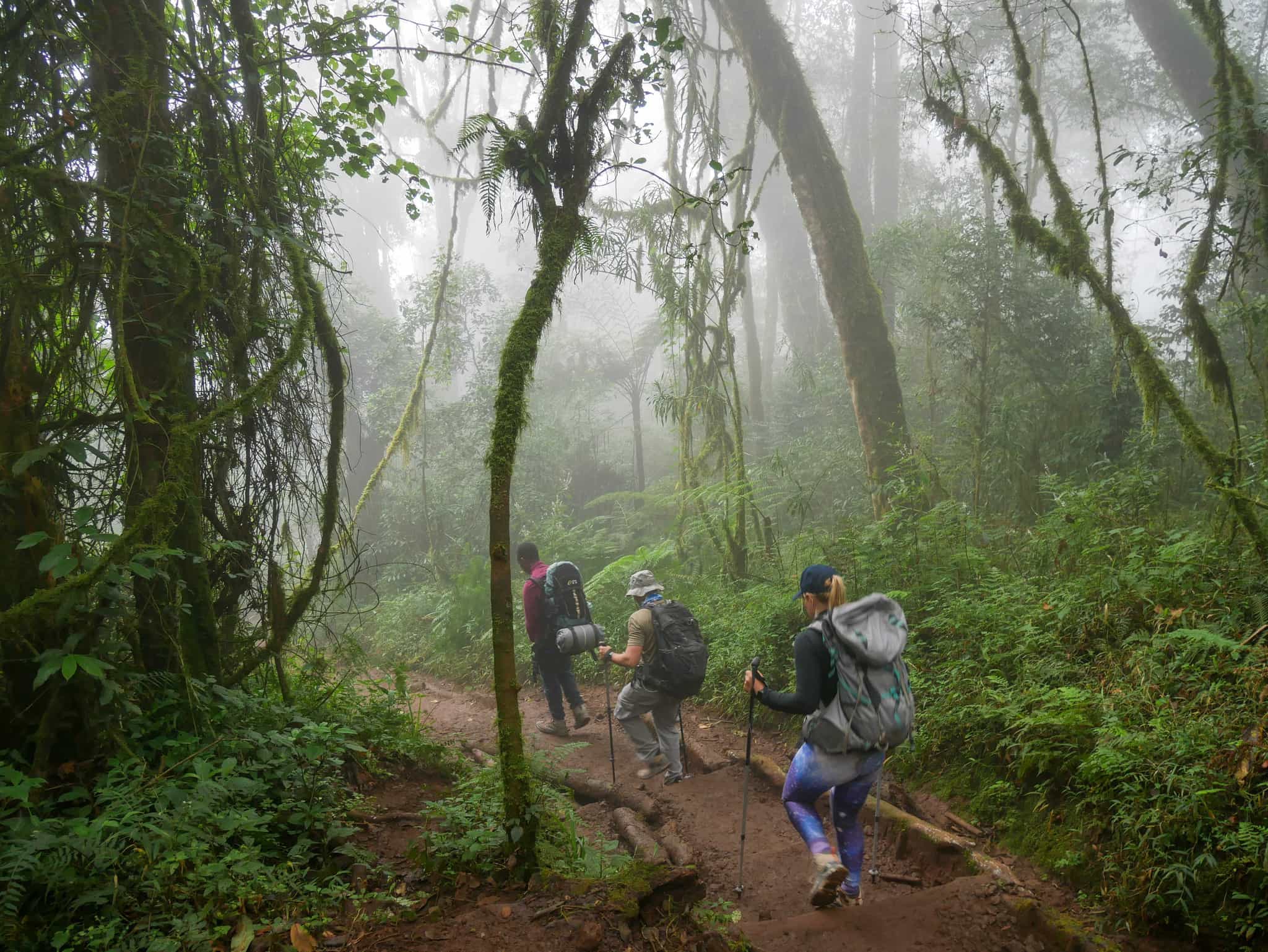
Hiking
Continue your descent to the Mweka Park Gate through lush forest – eyes peeled for fluffy black and white colobus monkeys as you reach the lower elevations. The weather here will be significantly warmer making the terrain wet and muddy so have your gaiters and trekking poles handy. When you reach the park gate, you’ll collect your summit certificate before driving back to your hotel in Moshi where you can enjoy a hot shower and celebrate your adventure. Following your trek, there will be a tipping ceremony for the crew who helped you to scale the mountain – please see the FAQs below for more information on this important local custom.
Day 9
Time to head home
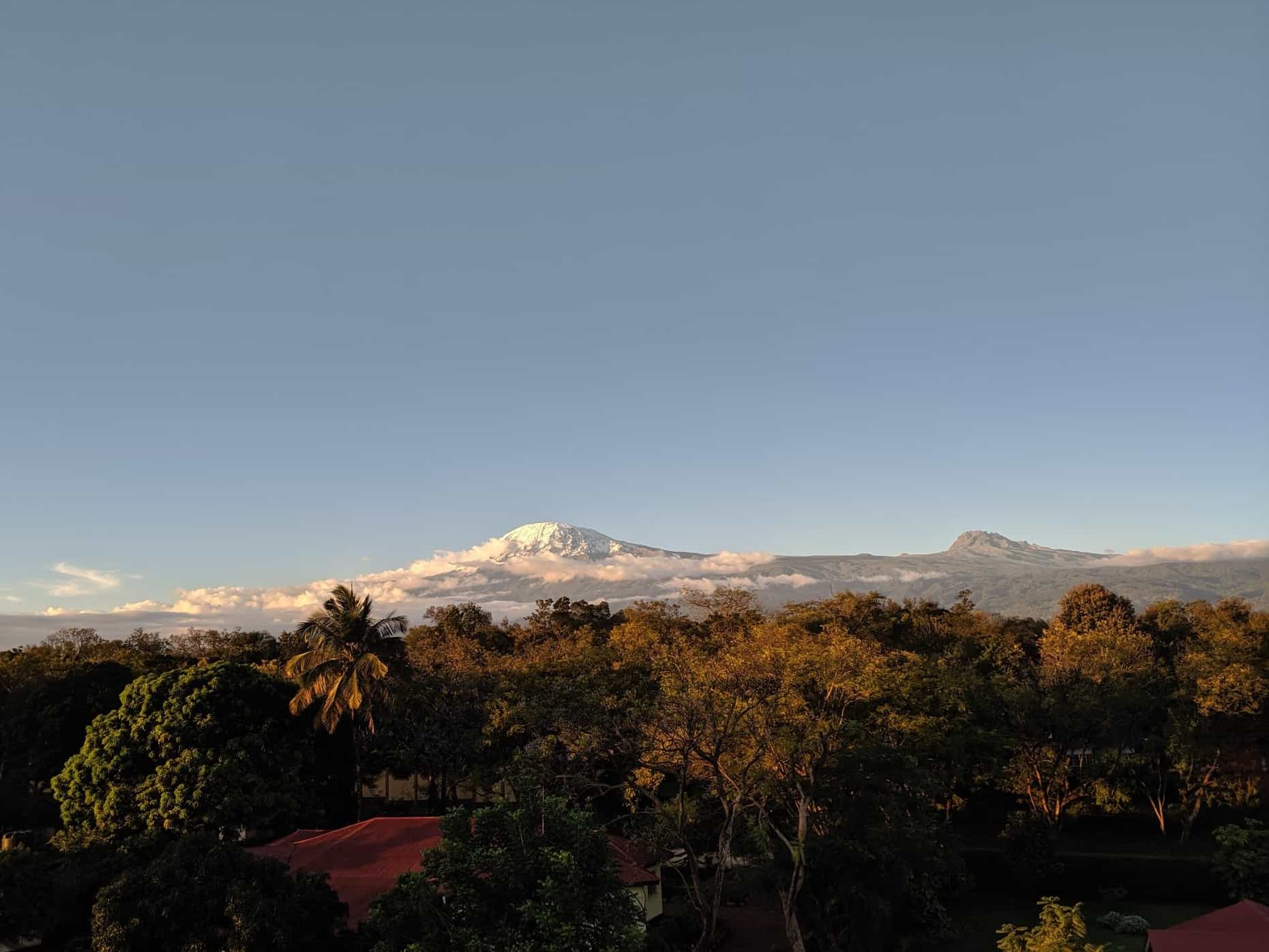
Enjoy a relaxed breakfast to mark the end of a remarkable trip and then head back to the airport, or continue your adventure in Tanzania.
Day 1
Breakfast
Lunch
Dinner
Day 2 – Day 7
Breakfast
Lunch
Dinner
Day 8
Breakfast
Lunch
Dinner
Day 9
Breakfast
Lunch
Dinner
What is the food like?
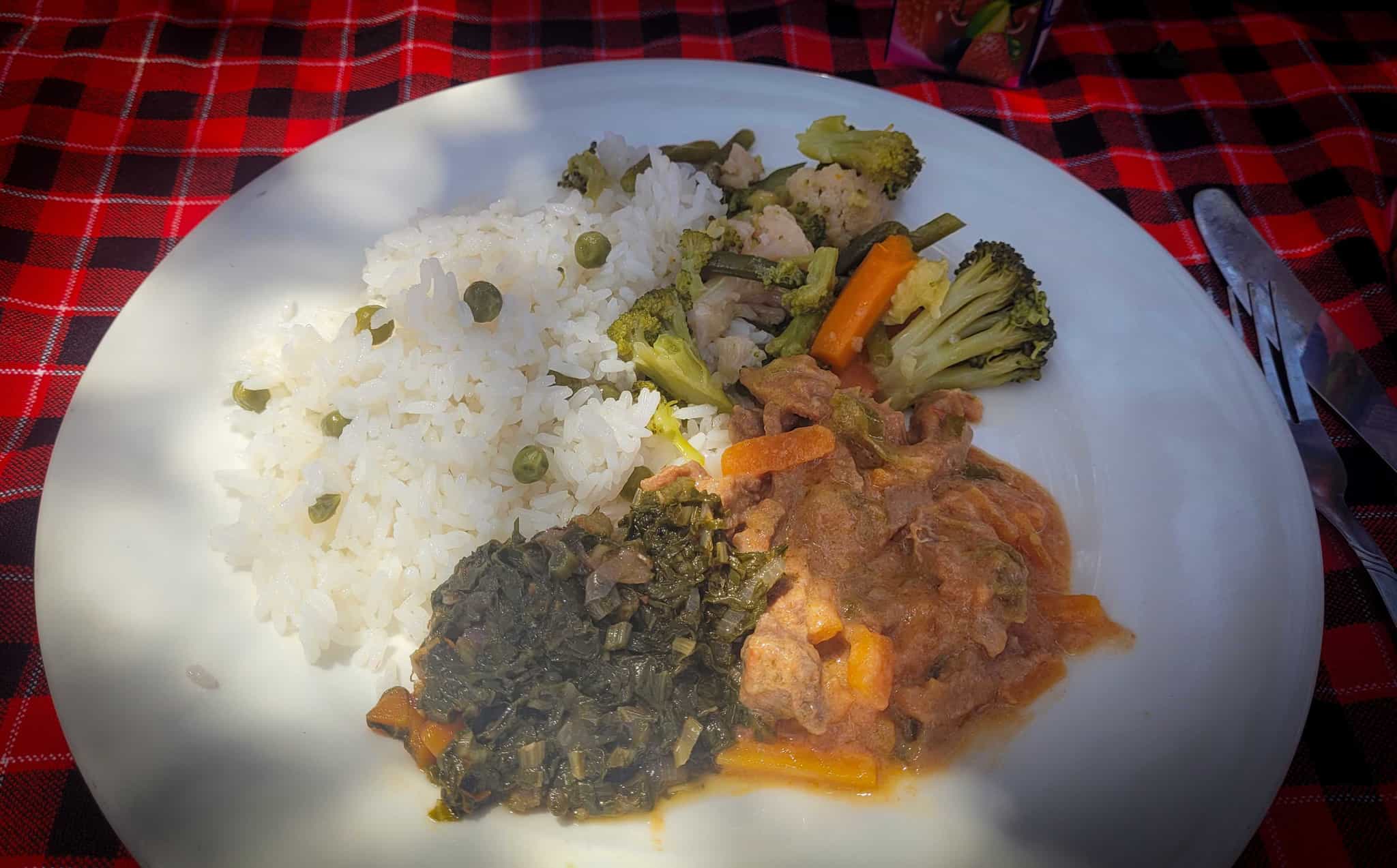
Throughout your trip, a team of experienced chefs will cook and serve you nutritious meals. Breakfast will usually be some combination of fruit, cereal, porridge, eggs, bread, French toast, pancakes, sausage, bacon, tea, coffee and hot chocolate. Lunch will be a mix of vegetables, fruit, boiled egg, meat cutlets, various sandwich options (egg/cheese/tomato/tuna/meat/peanut butter), macaroni and meat sauce and bread. Dinner, meanwhile, will usually consist of soup, bread, salads, rice, pasta, potatoes, roast or fried chicken, beef or fish, curry, mixed vegetables, lentils, fruit salad and fruit with custard. On summit night, you’ll enjoy a midnight snack with juice, soup, hot chocolate, tea or coffee and biscuits, and when you return to base camp, a nice meal will be waiting as a reward all your hard work. If you have any special dietary requests, let your host know in advance and they will do their best to accommodate them. Vegan and vegetarian diets can be fully catered for.
What is the accommodation like?
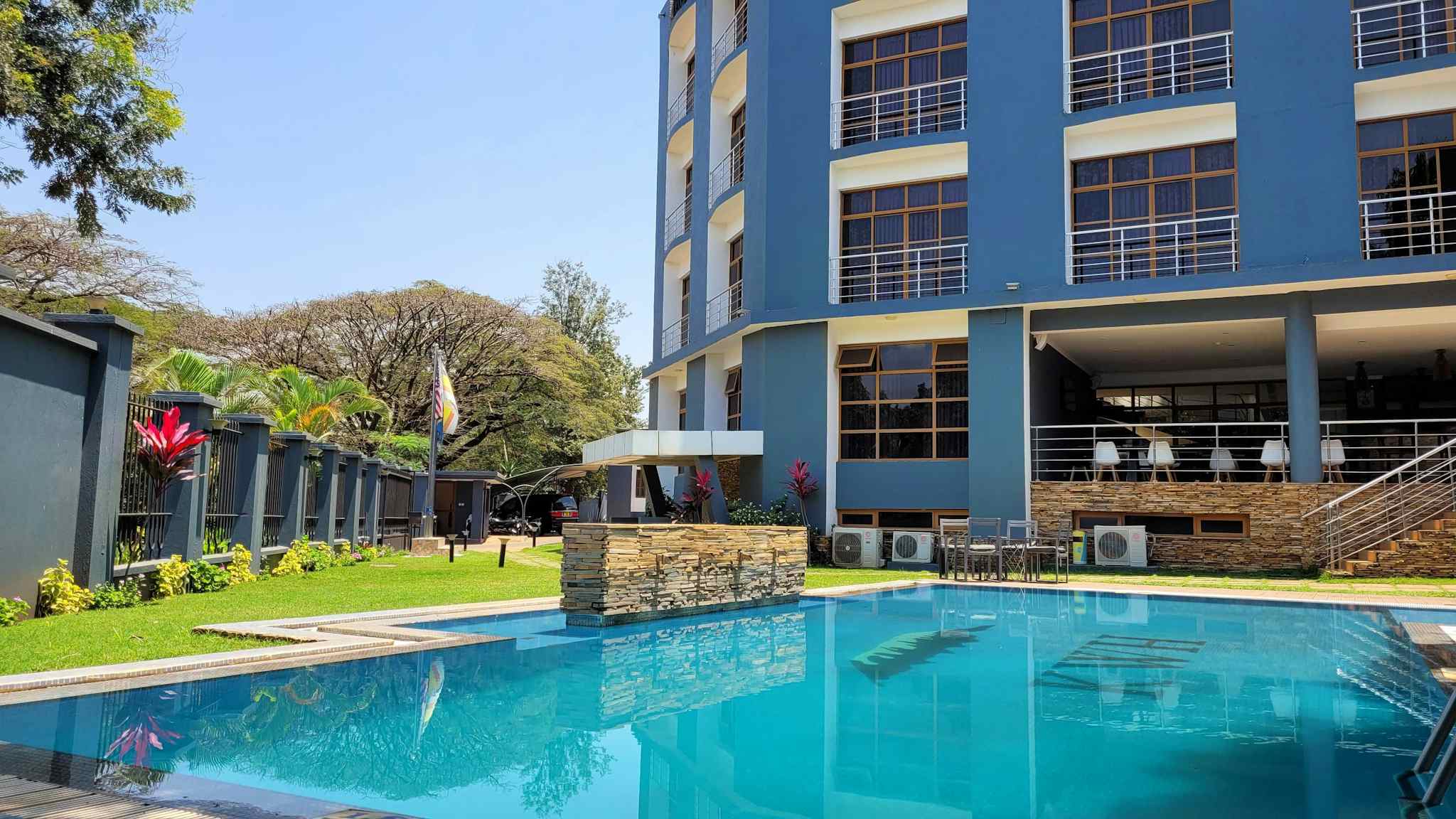
Moshi
You'll spend your first and last nights of the trip in a twin-share room at either The Maridadi Hotel or the Kilimanjaro Wonders Hotel. Both are located a short drive from Moshi Town and 40km from the airport. Both are small boutique hotels which have on-site restaurants offering a range of options from a la carte dinners, or if you prefer something a little more casual, there’s also the choice to have pizza or flame-grilled BBQ meals. The hotels are also both lucky enough to feature roof top bars with stunning views of Mount Kilimanjaro. Rooms are modern and comfortable with air conditioning, ensuite bathrooms and free WiFi.
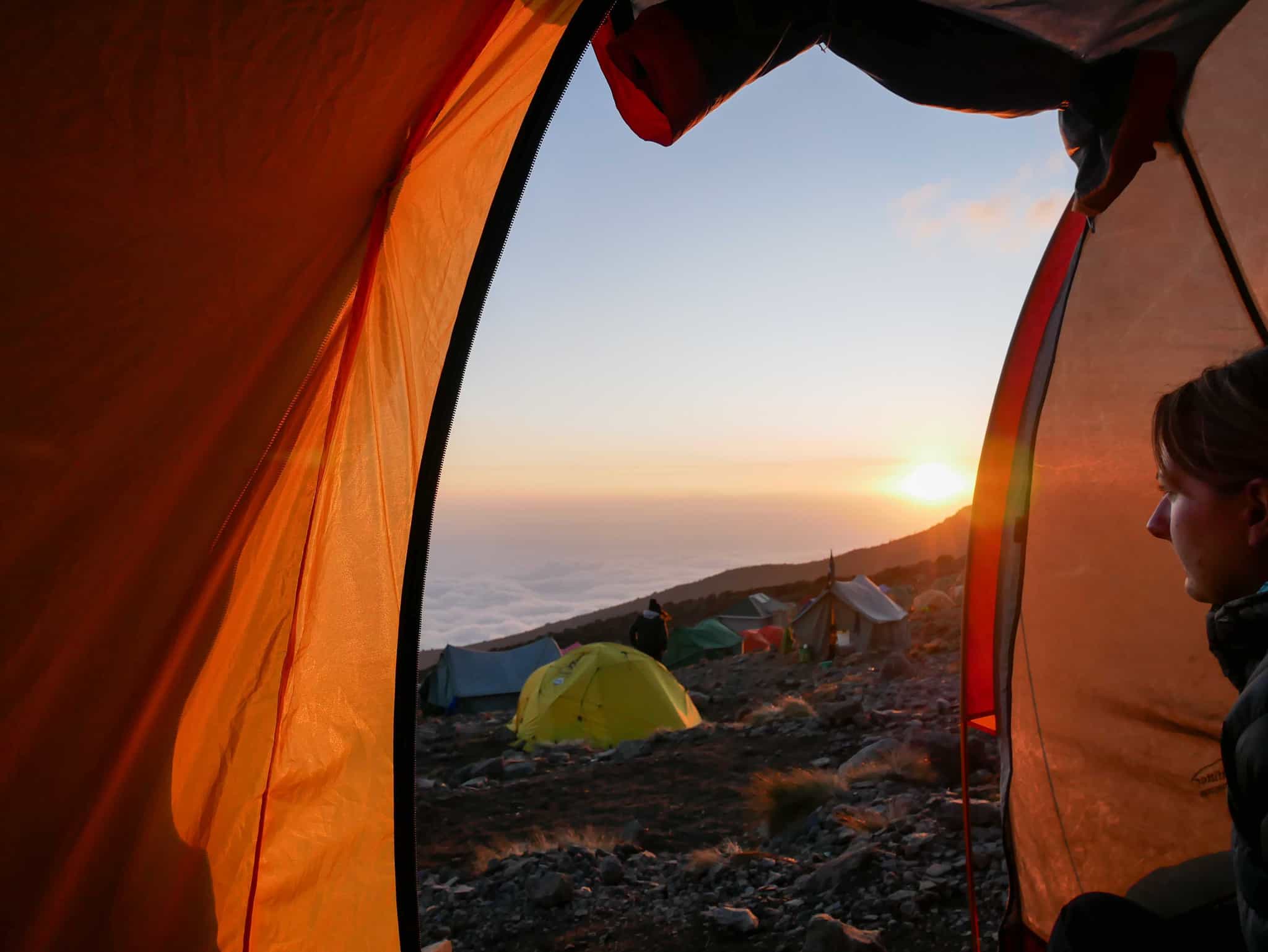
Along the Machame Route
During the trek, you will camp at a number of sites along the Machame Route in twin-share tents, with camping and cooking equipment provided (you'll need to bring your own sleeping bag, or hire one, though). You'll also have a mess tent where you'll be served all your meals, and a toilet tent used only by your group. Your team of porters will set up and break down camp for you each day.
Upgrades
For solo travellers wanting their own space, there is the option to upgrade to a private room or tent if you would like to do so, subject to availability. See Optional Extras for prices.
This trip has been rated as Challenging
Mount Kilimanjaro isn’t a technical climb and anyone with reasonable fitness should be capable of summiting it as long as they are prepared and determined. However, this doesn't mean it is easy: the main challenge is the high altitude, therefore a slow pace is recommended when ascending.
It's possible to climb Mount Kilimanjaro all year round, however, the months outside of the rainy seasons are more desirable. The best climbing months are from December to March and July to October. The best weather is usually at the beginning of the year from January to March, which are also typically the warmest and driest months. Thanks to Tanzania’s proximity to the equator, the region doesn’t typically experience the extremes of winter and summer weather you might expect and instead has dry and wet seasons. The local weather conditions on Kilimanjaro can be somewhat unpredictable (to say the least) and rainfall varies from 2100mm per year in the rainforest belt to less than 120mm per year in the summit zone. Daily temperature changes are also unpredictable when compared to normal weather cycles, and are largely dependent on the altitude.
The Area
Logistics
Starts
Kilimanjaro Airport
Any time on Day 1
Ends
Kilimanjaro Wonders Hotel in Moshi or Kilimanjaro Airport
Any time on Day 9
Transfers
Your adventure begins at Kilimanjaro Airport (JRO) where your driver will be waiting for you outside the Arrivals area. Alternatively, if you’re already in Tanzania, your host can arrange a pick-up from any point upon request (not included). Your adventure ends with an overnight stay at the Kilimanjaro Wonders Hotel in Moshi; from here you may decide to continue your adventure in Tanzania or ask your host to arrange an airport transfer for any flight departing that day. The airport transfer takes around an hour.
Airport transfers are included in the price if you arrive on Day 1 and depart on Day 12. For those arriving early or wanting to stay on longer, extra nights at the hotels and airport transfers can be arranged with your host at an additional cost. Please see Optional Extras for more information.
Travel options
There are frequent flights to Kilimanjaro (JRO) from major airports across the UK and Europe.
Enjoy 12.5% Off Outdoor Gear
In need of a few more items? All bookings receive a 12.5% discount to use at Cotswold Outdoor, Snow + Rock and Runner's Need.
What's included?
- Tent - Mountain Hardwear brand, Trango 3
- Foam mattress
- Dining tents with a solar light
- Comfy chairs with backrest
- Oxygen tanks
- All cooking equipment
What do I need to bring?
- Waterproof jacket - breathable with hood
- Weather rated insulated jacket - synthetic or down
- Soft jacket, fleece or soft-shell
- Long sleeved shirts - light-weight, moisture-wicking fabric (2)
- Short sleeved shirts - light-weight, moisture-wicking fabric (2)
- Waterproof pants - breathable
- Hiking pants - convertible to shorts recommended (2)
- Fleece pants
- Shorts (optional)
- Long underwear - moisture-wicking fabric recommended (2)
- Underwear - moisture-wicking fabric recommended
- Sports bra (women)
- Hiking boots - warm, waterproof, broken-in with spare laces
- Gym shoes - to wear at camp (optional)
- Socks - thick, wool or synthetic (3-5)
- Sock liners - tight, thin, synthetic, worn under socks to prevent blisters (3-5)
- Waterproof gaiters – highly recommended to prevent loose gravel and sand
- Sleeping bag - warm, four season rated
- Sleeping bag liner - for added warmth (optional)
- Trekking poles (highly recommended)
- Headlamp with extra batteries
- Duffel bag, for porters to carry your equipment
- Daypack to carry your personal gear
- Brimmed hat for sun protection
- Knit hat for warmth
- Balaclava for face coverage (highly recommended)
- Bandana (optional)
- Warm gloves (waterproof recommended)
- Glove liners - thin, synthetic, worn under gloves for added warmth*
- Sunglasses or goggles
- Backpack cover (waterproof)
- Poncho (during rainy season - optional)
- Water bottle (Nalgene recommended) AND a water bladder (CamelBak type) - must have 2-3 litres combined; please note that disposable plastic bottles are not allowed on the mountain due to National Park regulations
- Towel - lightweight, quick-dry (optional)
- Pee bottle, to avoid leaving tent at night (highly recommended)
- Stuff sacks or lightweight dry bags - various sizes, to keep gear dry and separate
- Lip balm
- Sunscreen
- Mosquito repellent (for in town - it's not usually needed on the mountain)
- Hot water bottle for the night
- Extra water purification tablets (water will be purified by your trek team on the mountain so this is optional)
- Nail brush
- Trip receipt
- Passport
- Visa (available upon arrival)
- Insurance documents
What can I hire?
- Walking poles
- Headtorch (you will need to bring your own AAA batteries)
- Sleeping bag
- Day pack (with or without waterproof covers)
- Duffel bag
- Nalgene water bottle/water bladder
- A range of clothing (fleece pants, waterproof pants, walking trousers, windbreaker/ski trousers, waterproof jacket, light fleece jacket, heavy fleece jacket, down/ski jacket, hat, thermal top & bottoms, scarf, sunglasses, thin glove liners, thick ski gloves, hiking boots, gaiters, poncho, socks)
- Pricing ranges from $5-$50 per item for the whole trip. Please request any items you would like to hire in the extras section on the booking form or contact your host prior to departure for confirmation of pricing and availability.
Pre/Post Trip Accommodation Double/Twin Room
Payable Before Departure
Pre/Post Trip Accommodation Double/Twin Room
… Per Night
Pre/Post Trip Accommodation Single Room
Payable Before Departure
Pre/Post Trip Accommodation Single Room
… Per Night
Private room & tent upgrade (nights 1-8)
Payable Before Departure
Private room & tent upgrade (nights 1-8)
… Per Person
Private room upgrade (nights 1 & 8 only)
Payable Before Departure
Private room upgrade (nights 1 & 8 only)
… Per Person
Private airport transfer - each way
Payable Before Departure
Private airport transfer - each way
…
Brilliant set up,the guides and
Brilliant set up,the guides and the porters go above and beyond with their help setting up camp,food and overall work ethic. I can't rate these men high enough,superb in every department,my thanks go to these guys for getting our challenge completed,we couldn't do it without you⭐⭐⭐⭐⭐
Perfect
The whole team were amazing. Great atmosphere hard work. Thanks
Our Purpose
To protect our world's wild places, one adventure at a time.
Positive impact adventure travel

